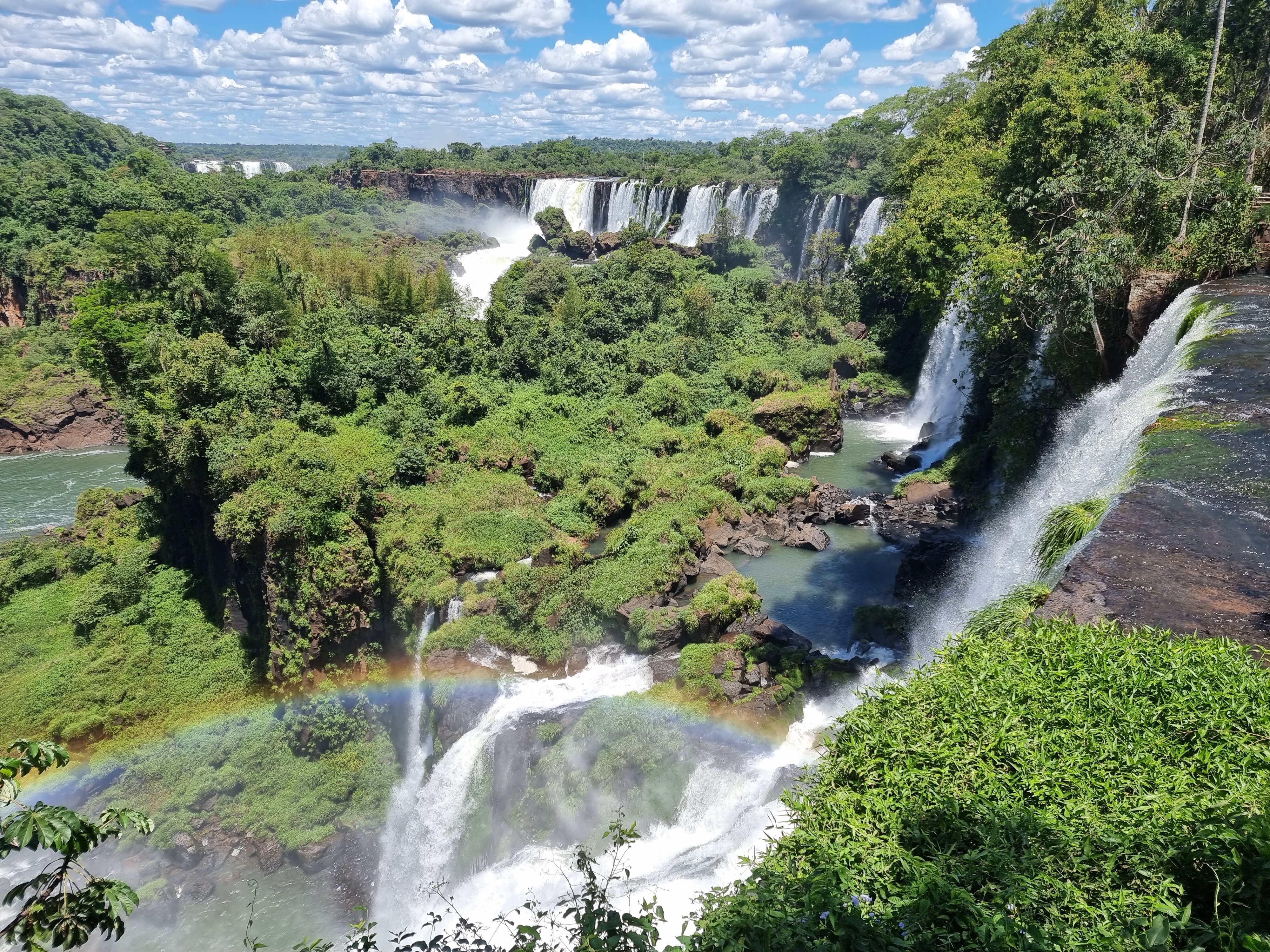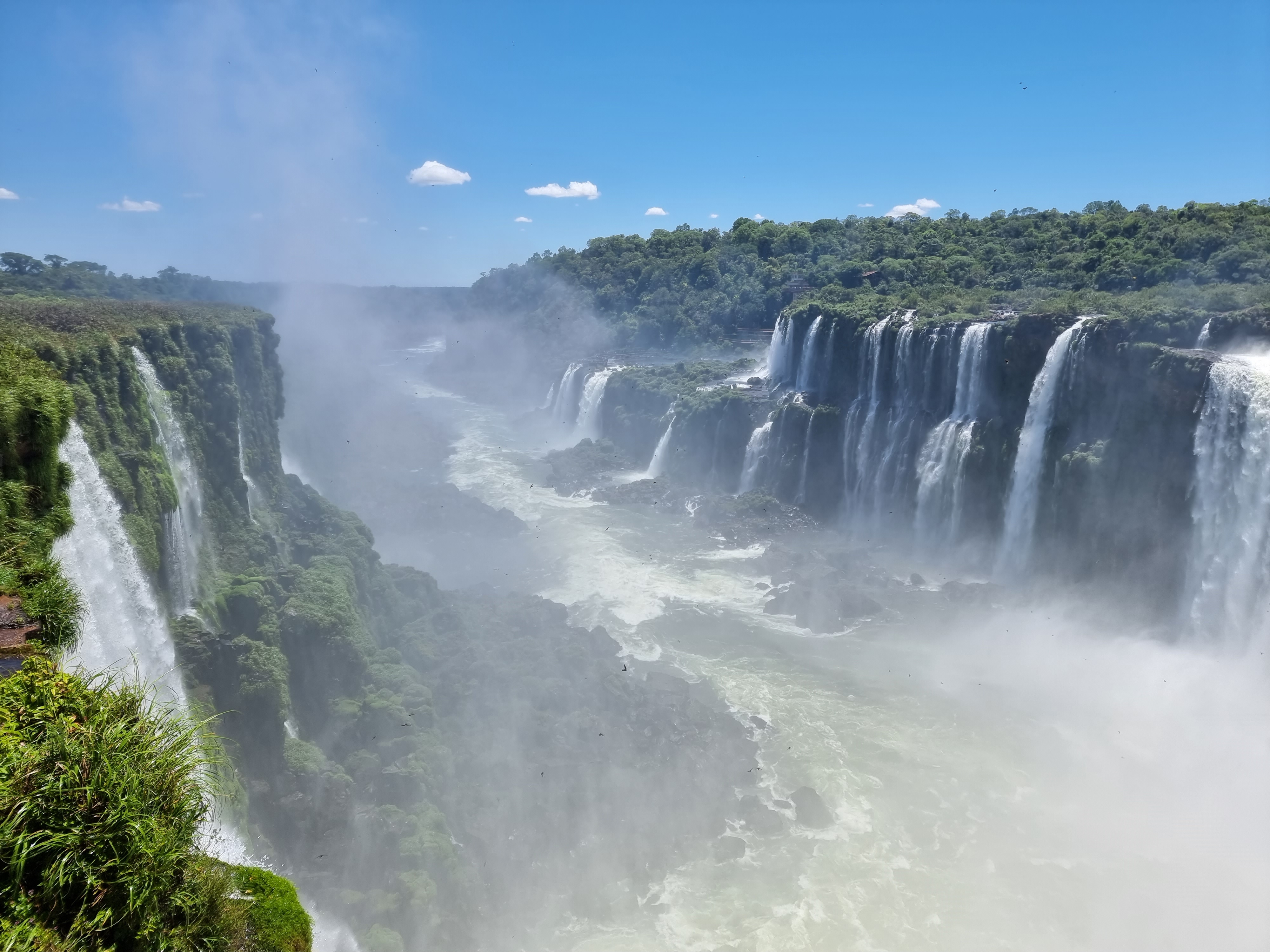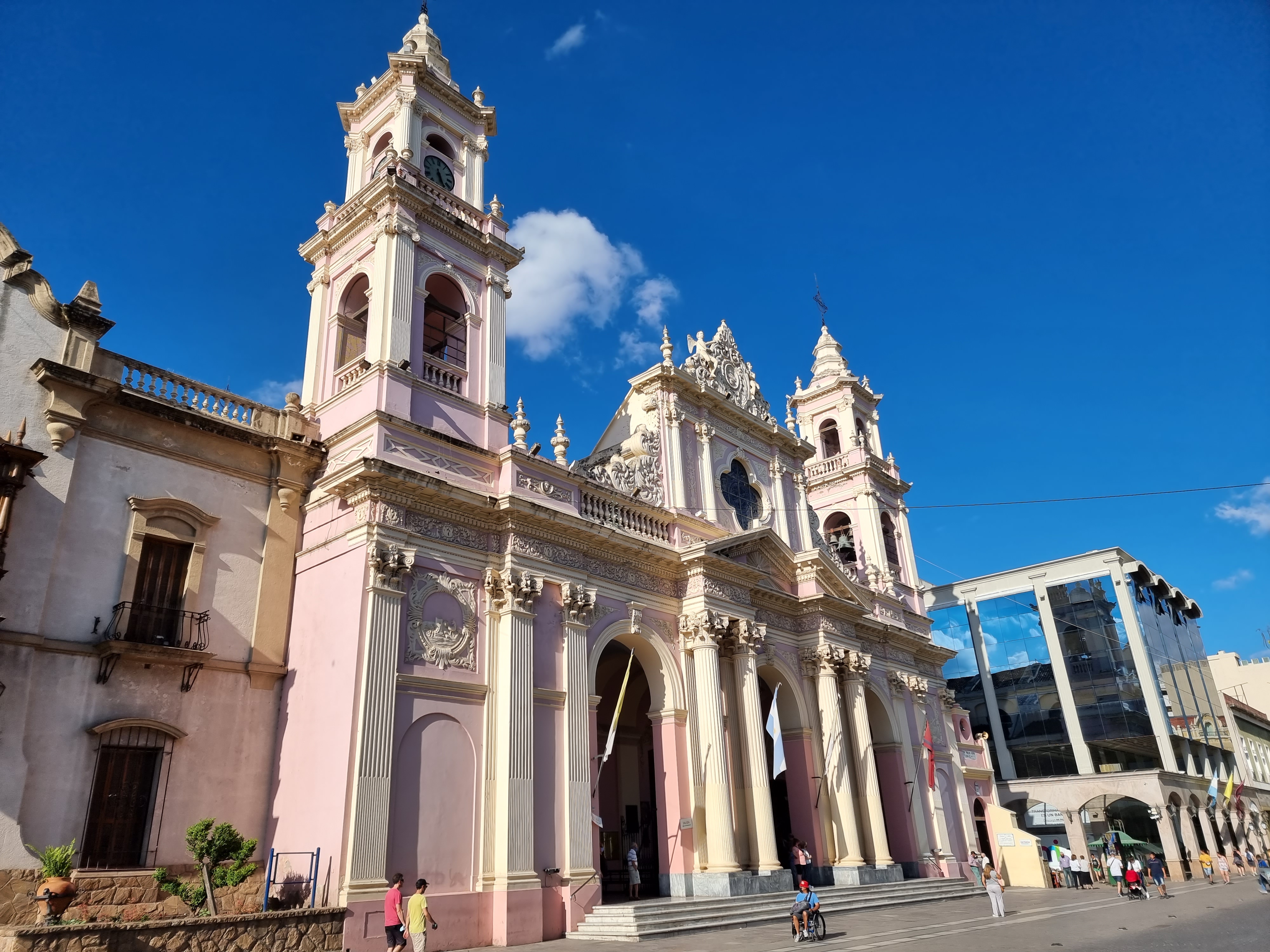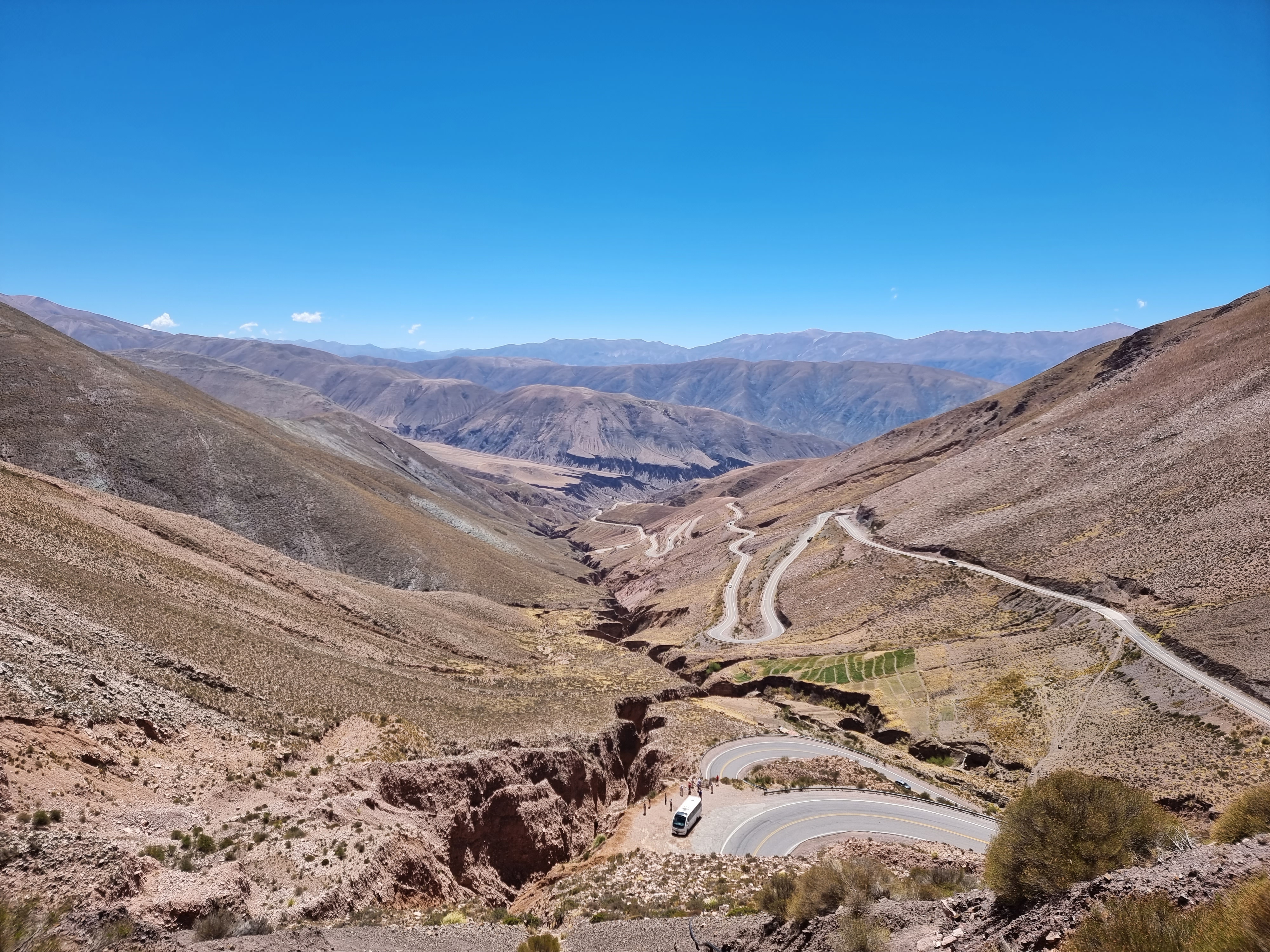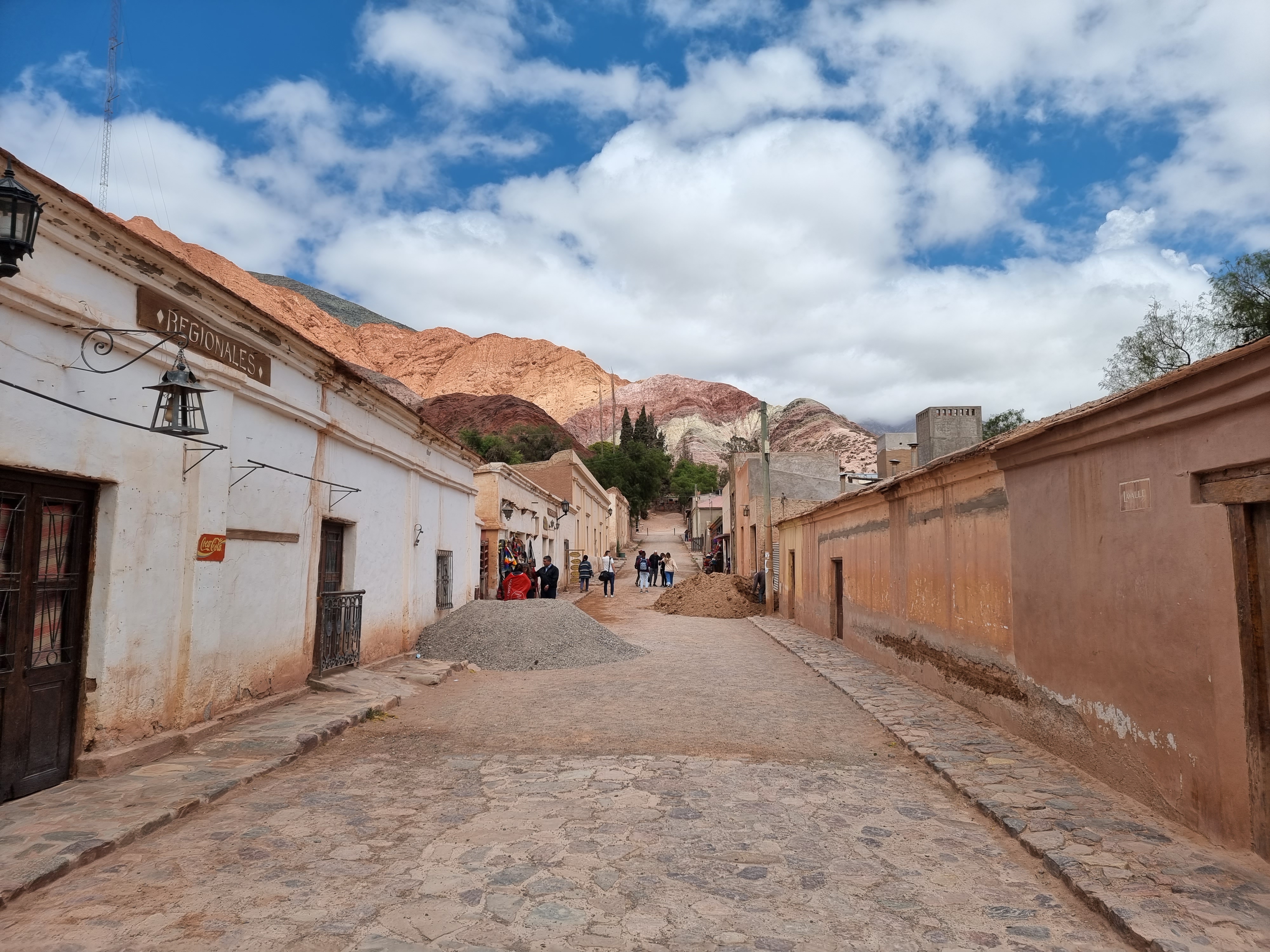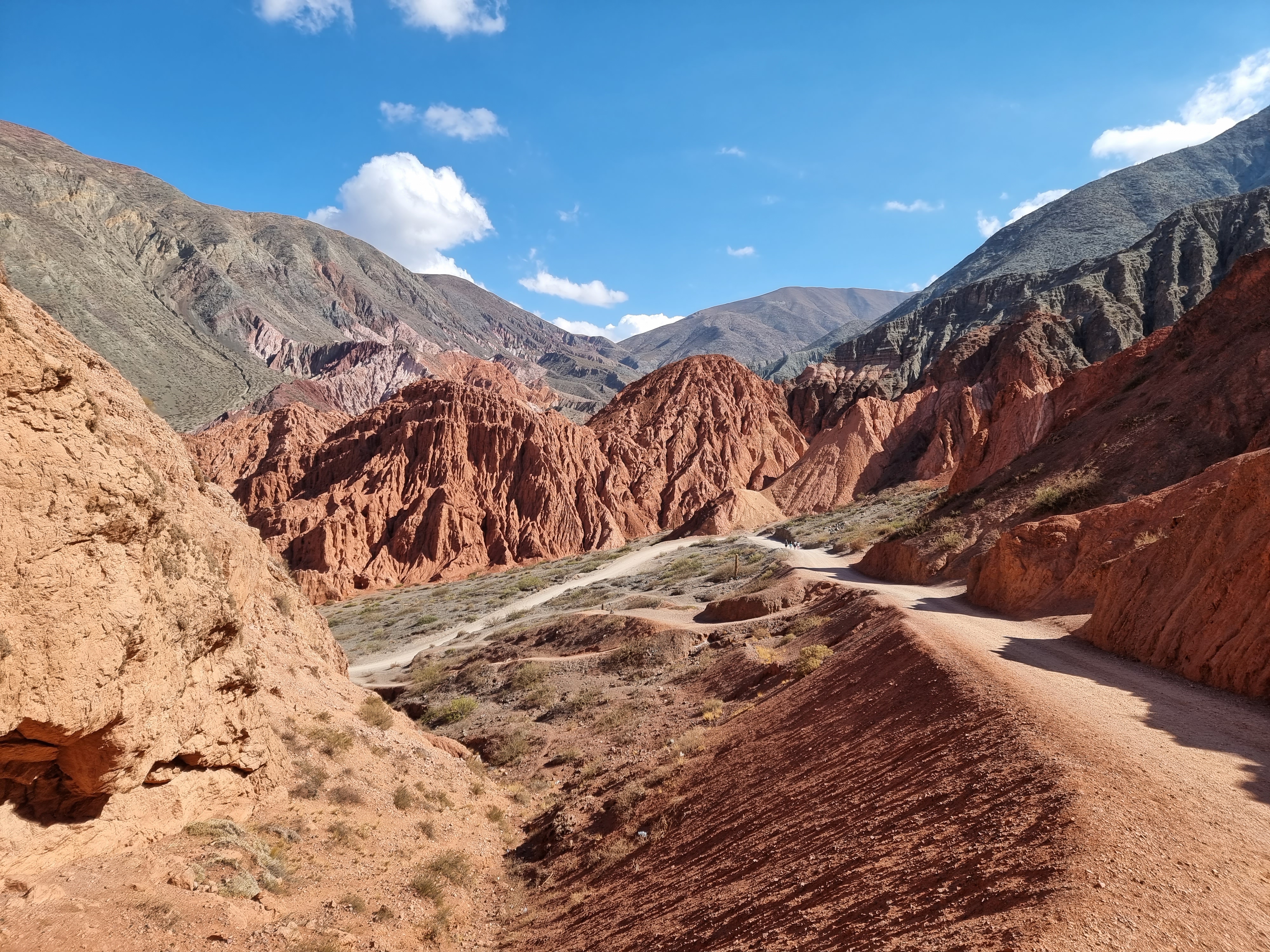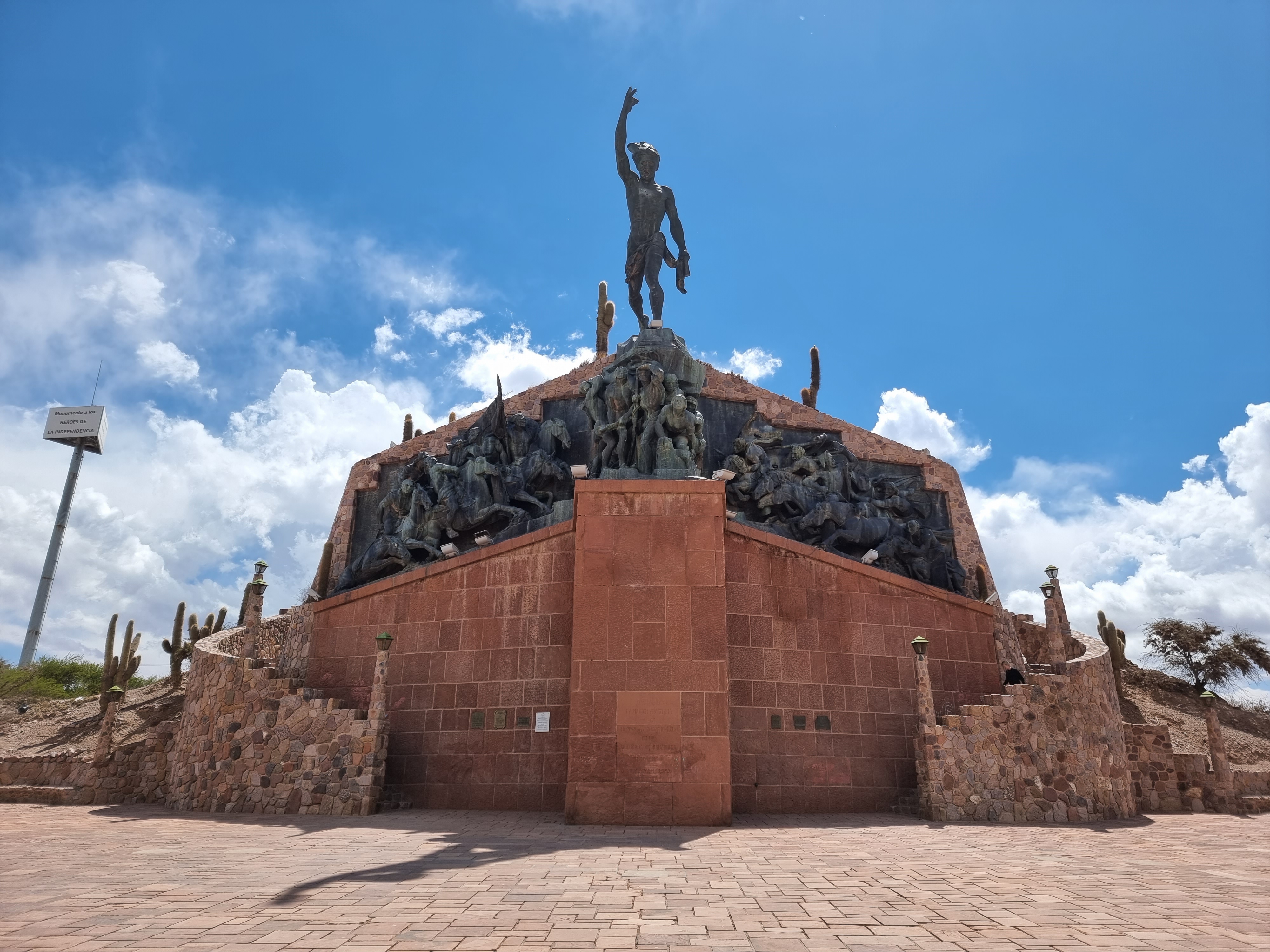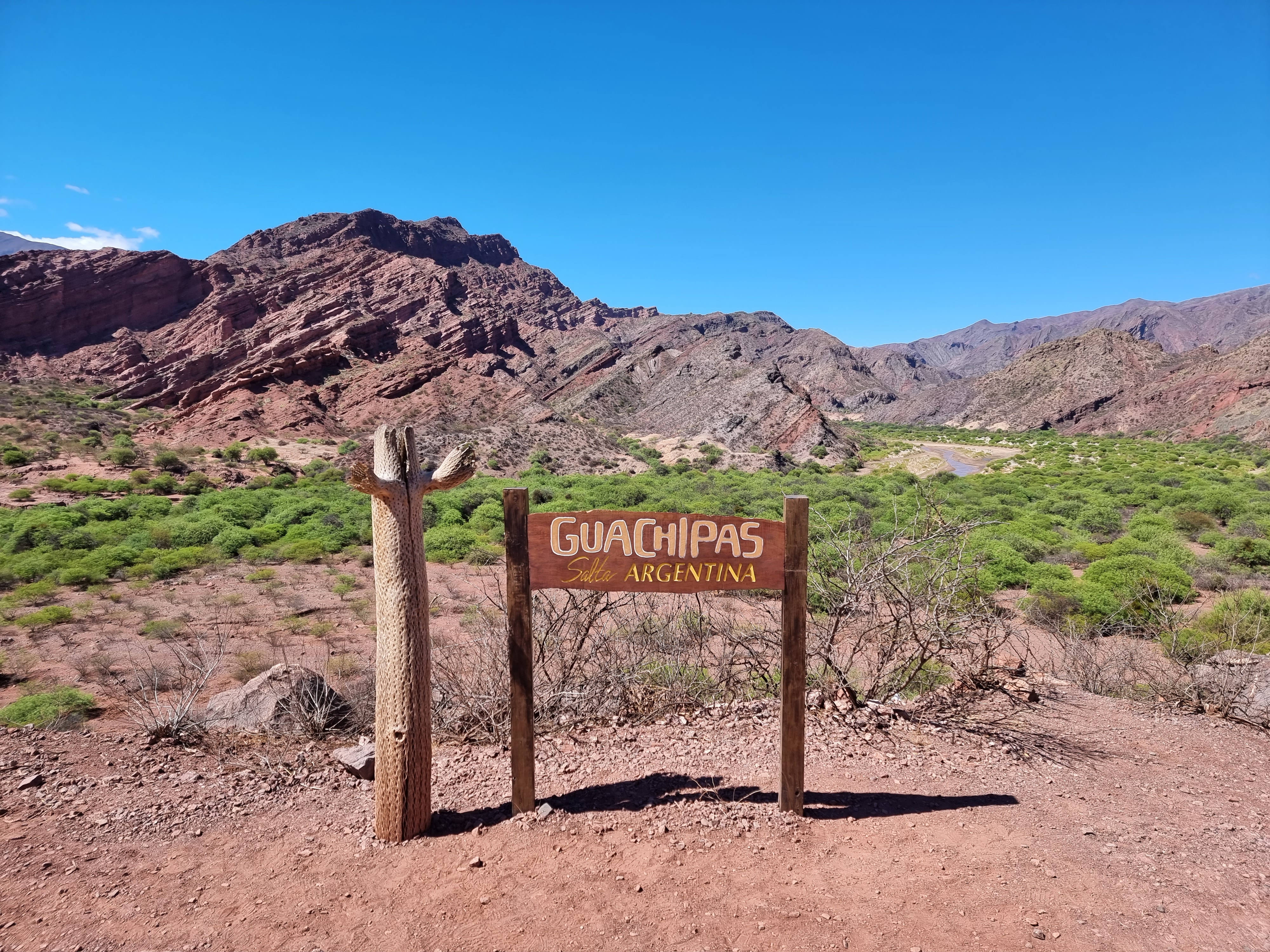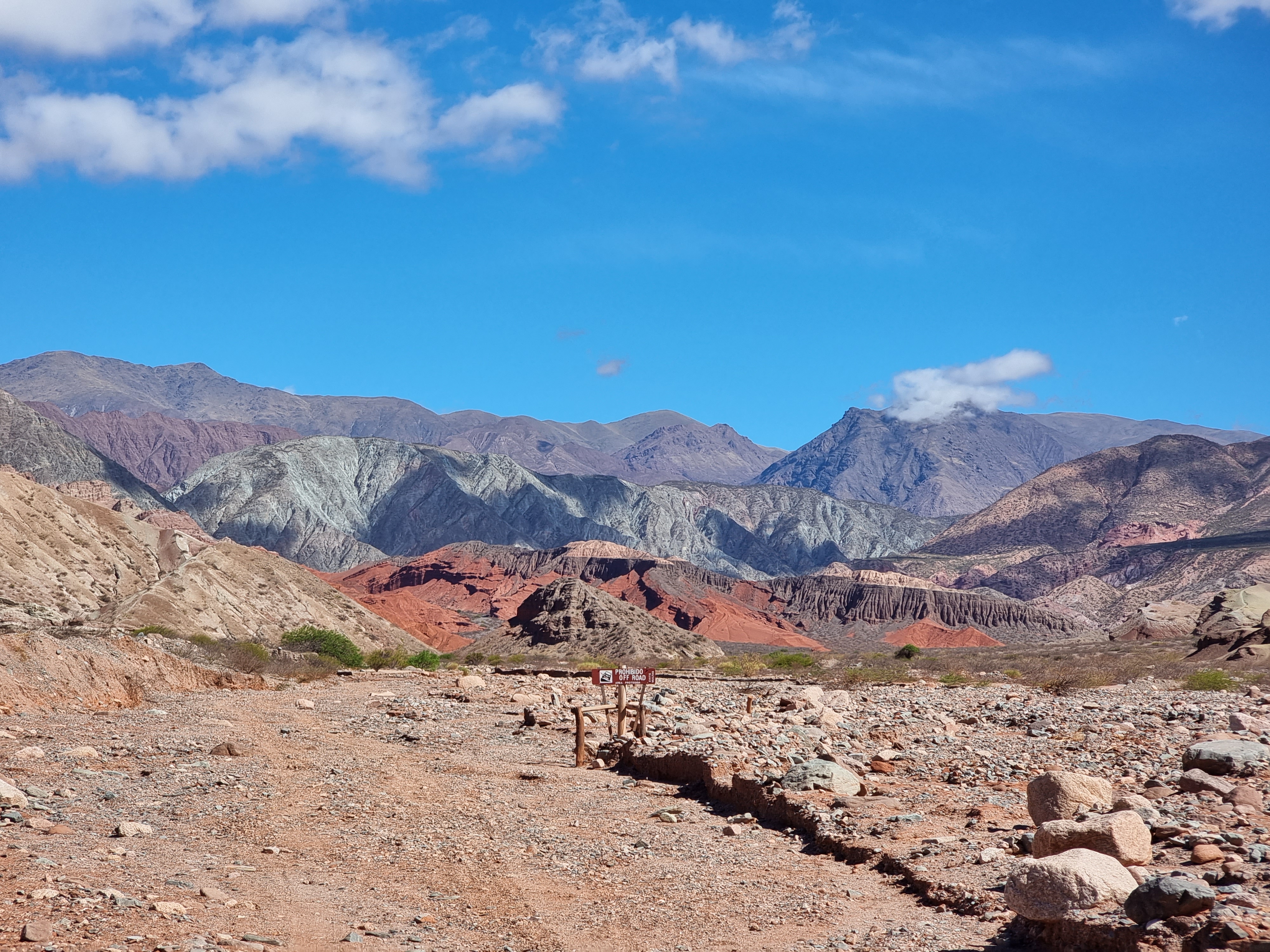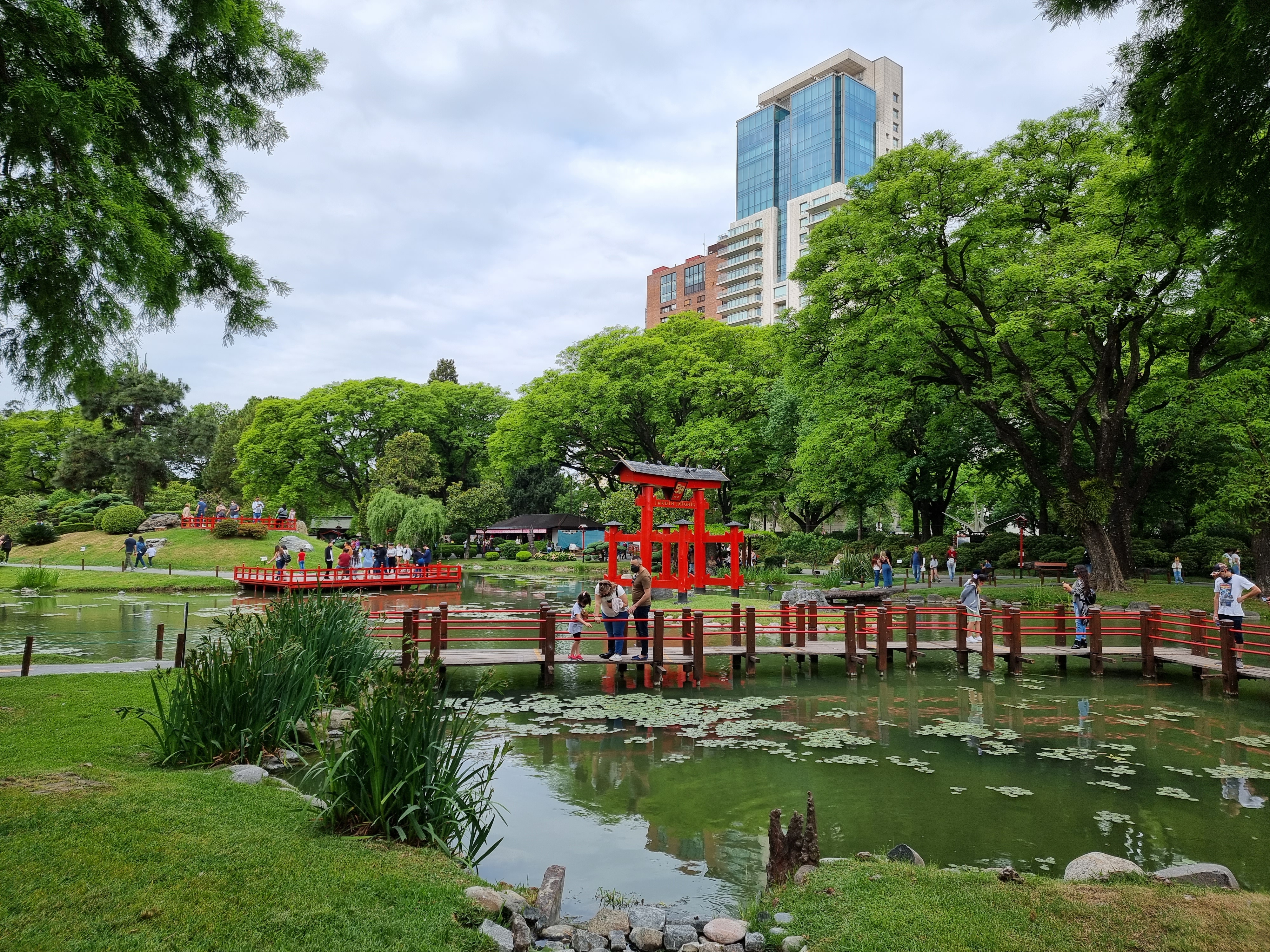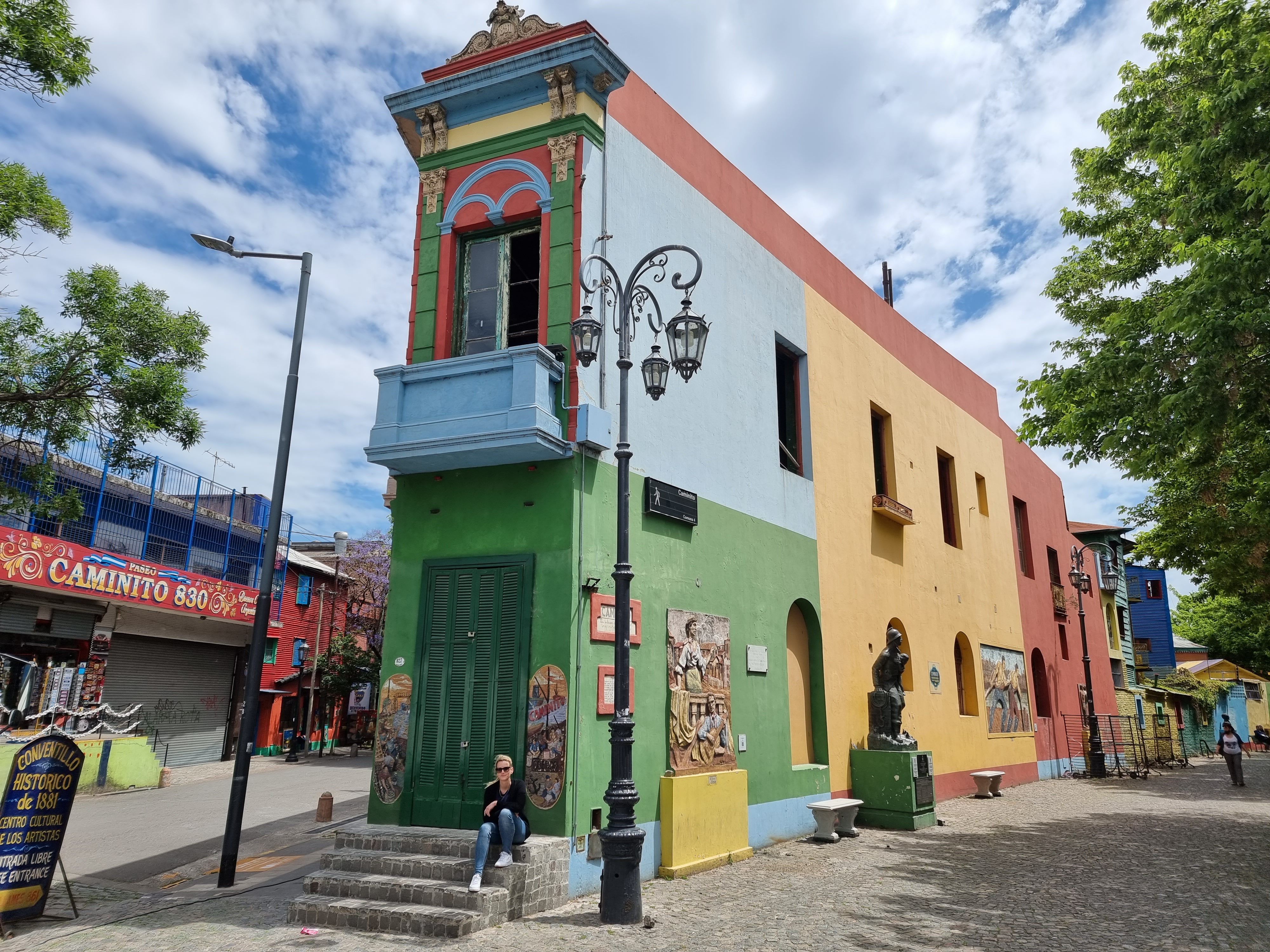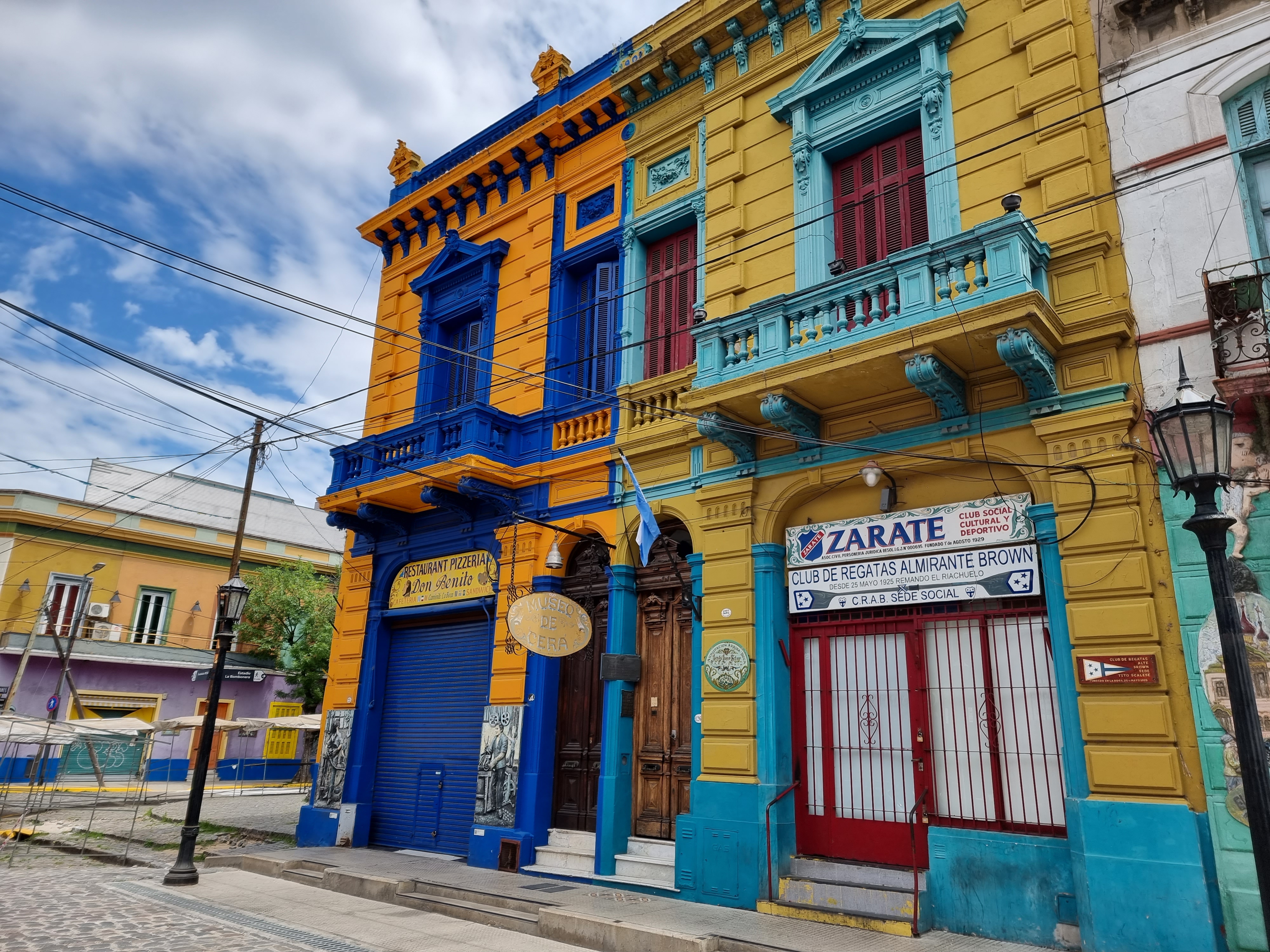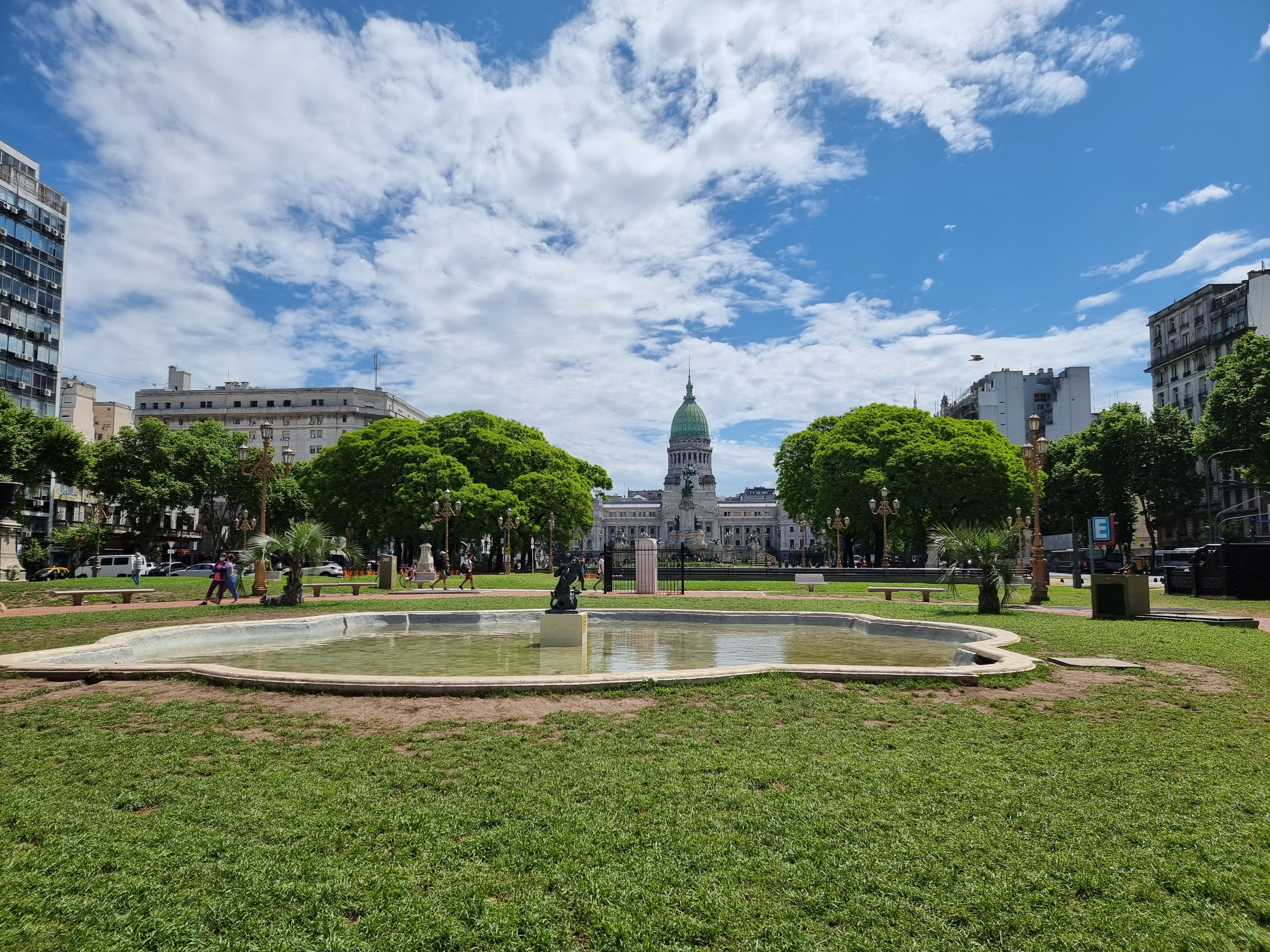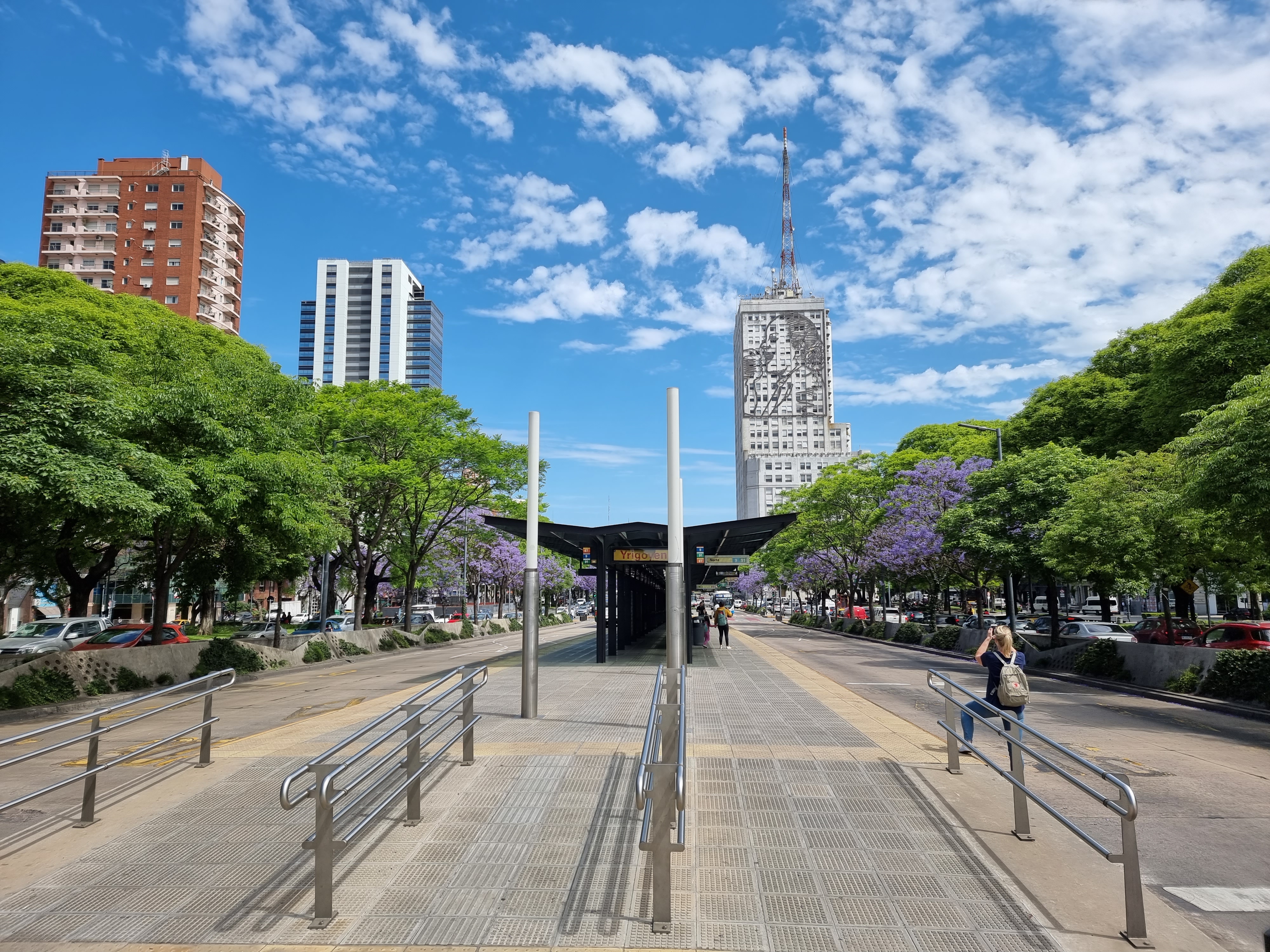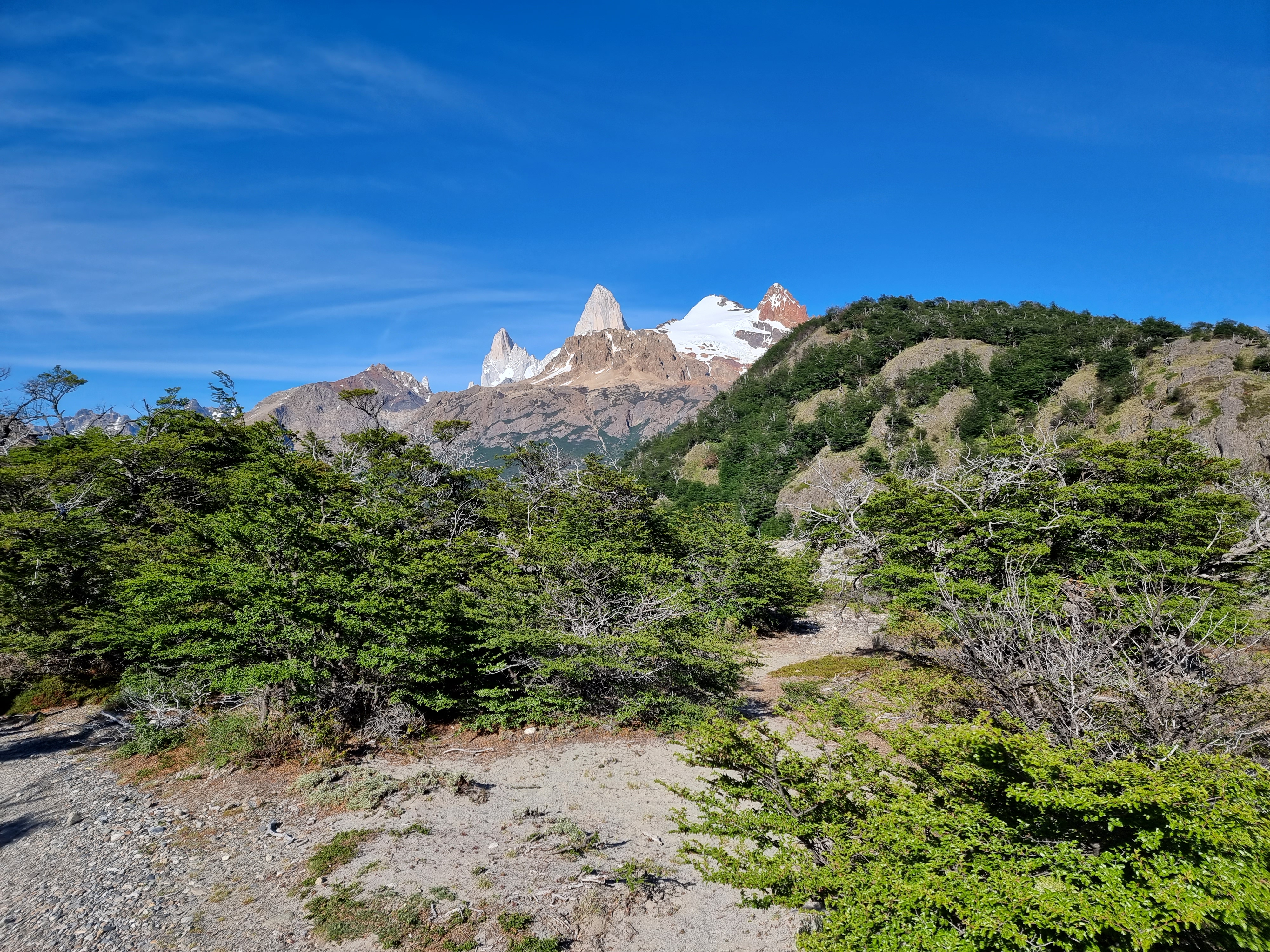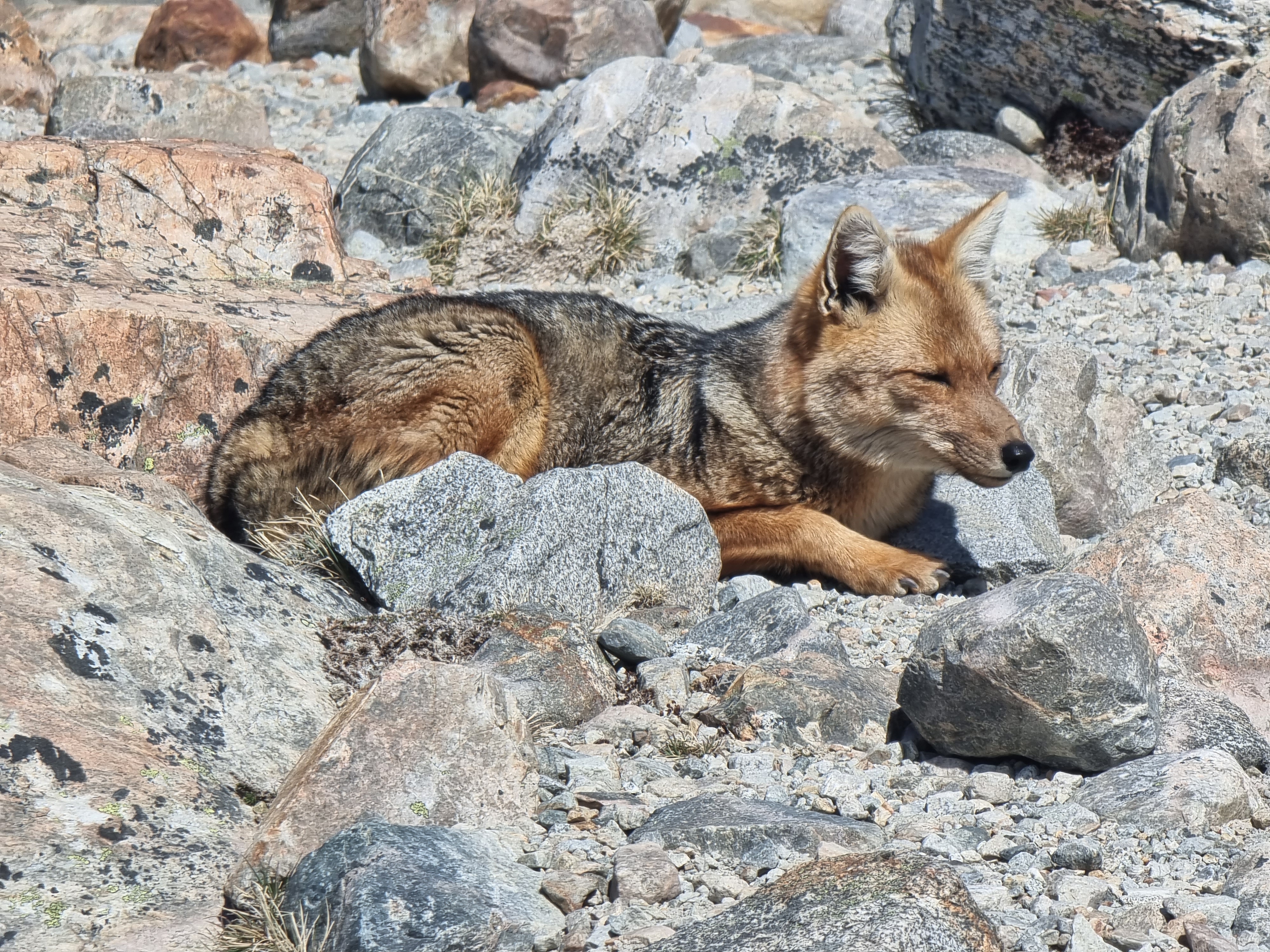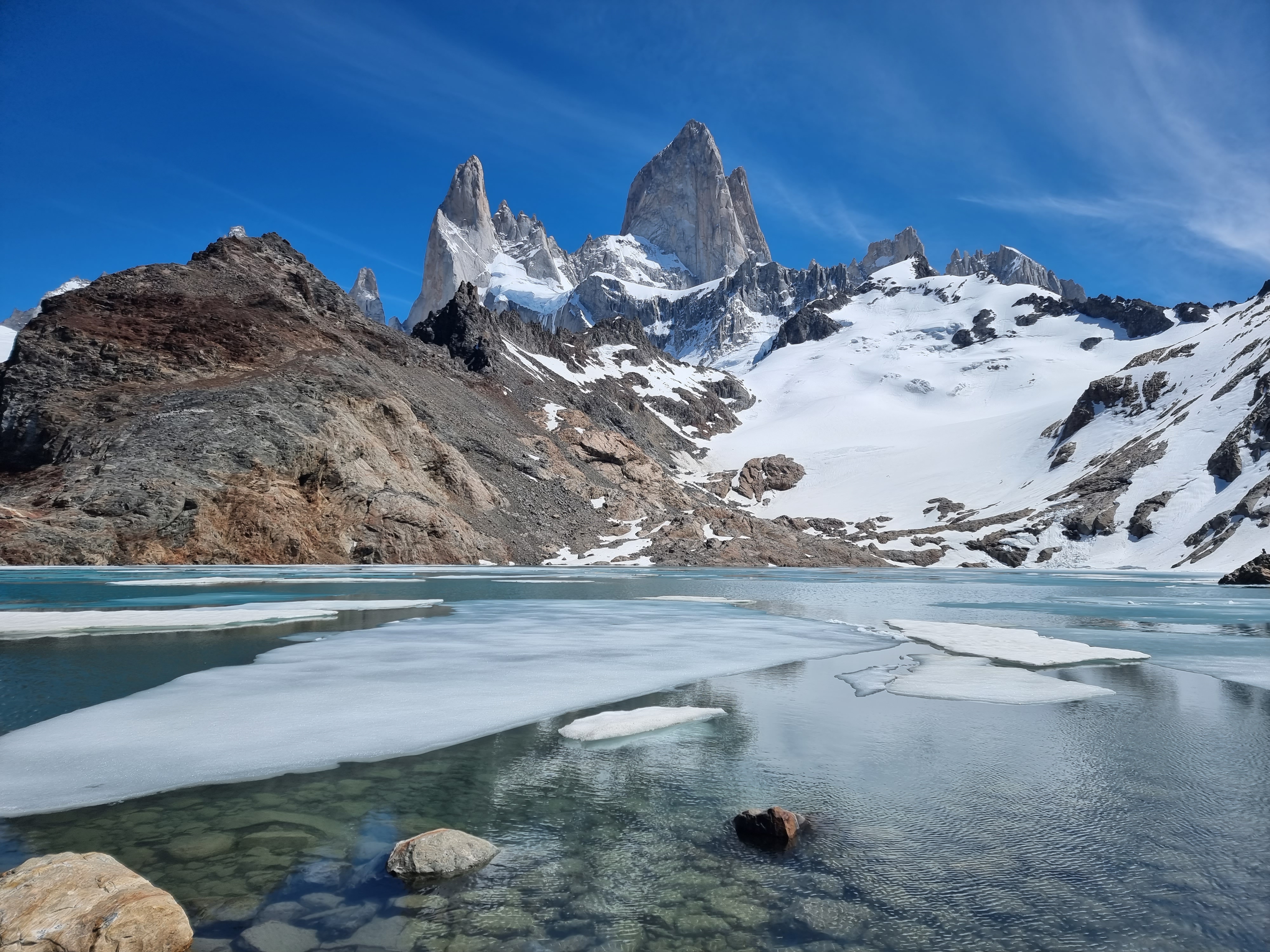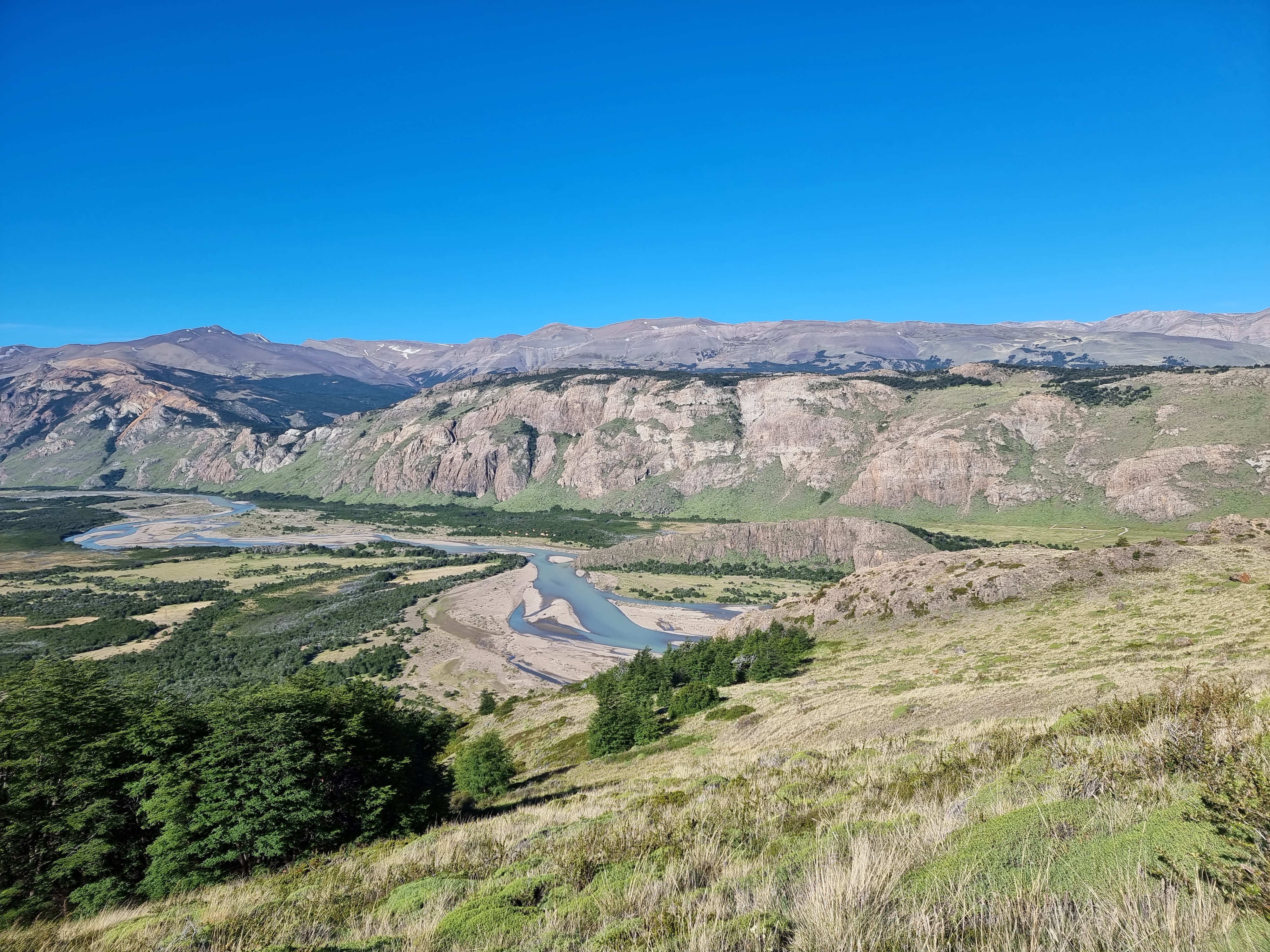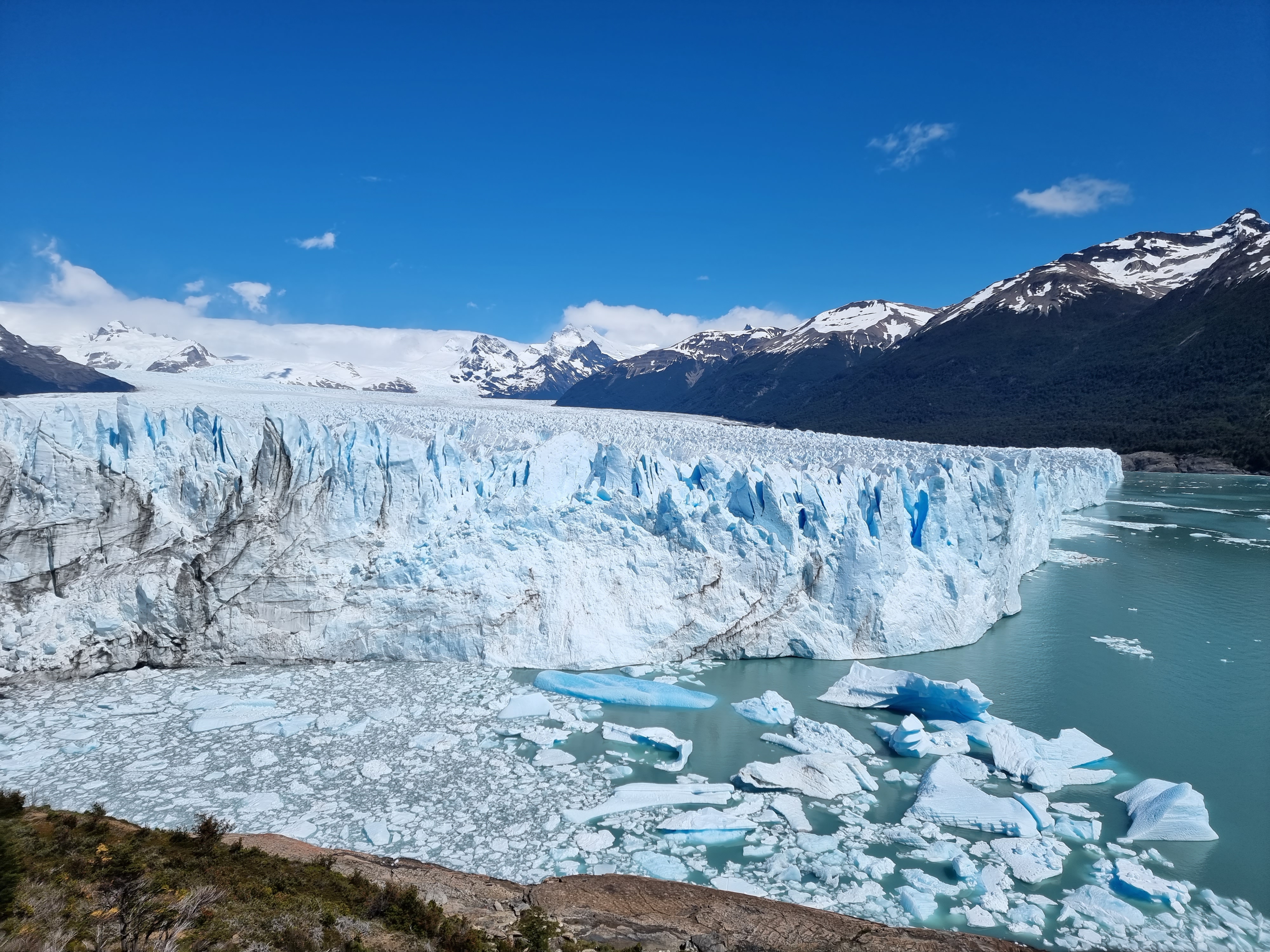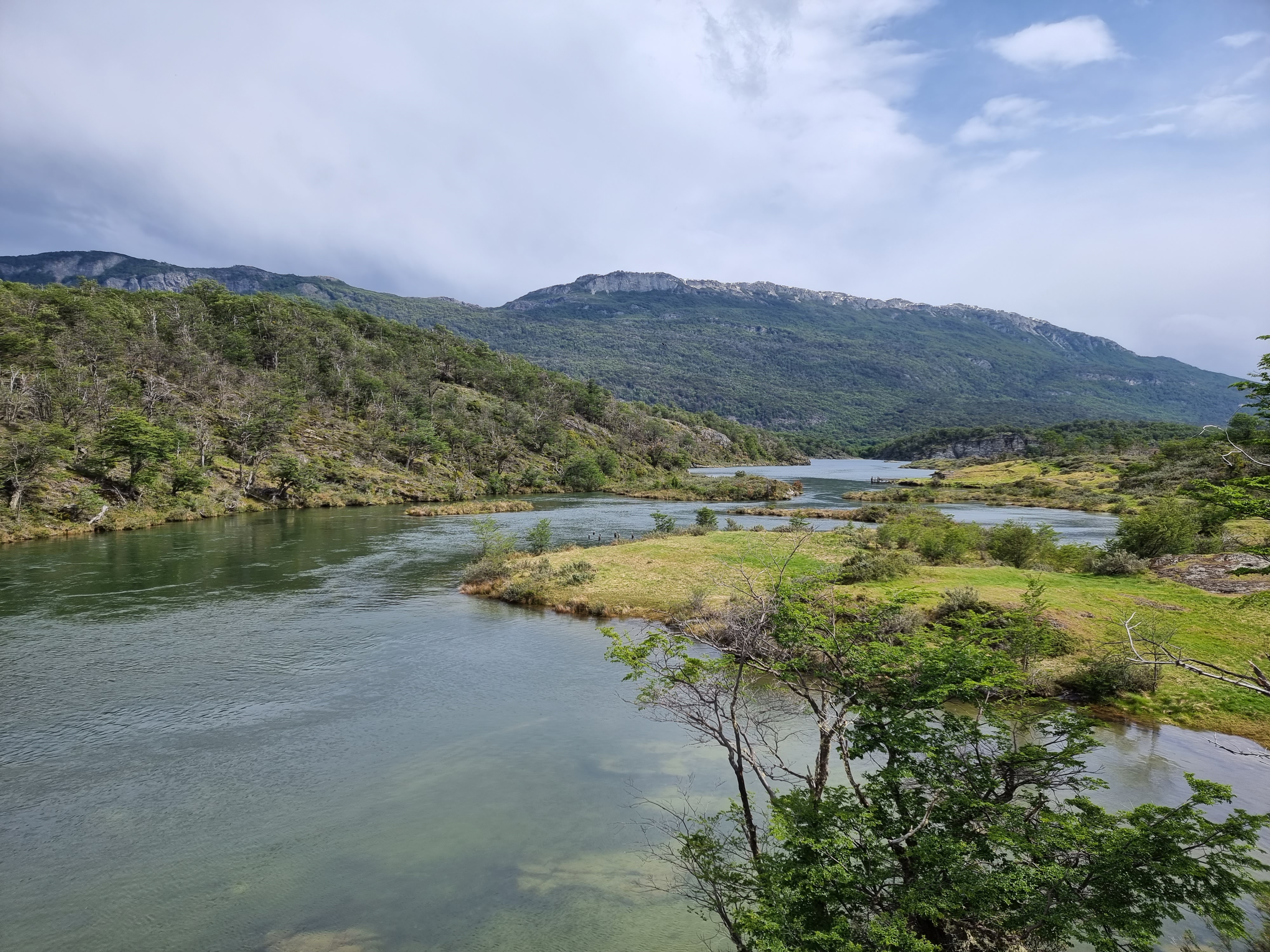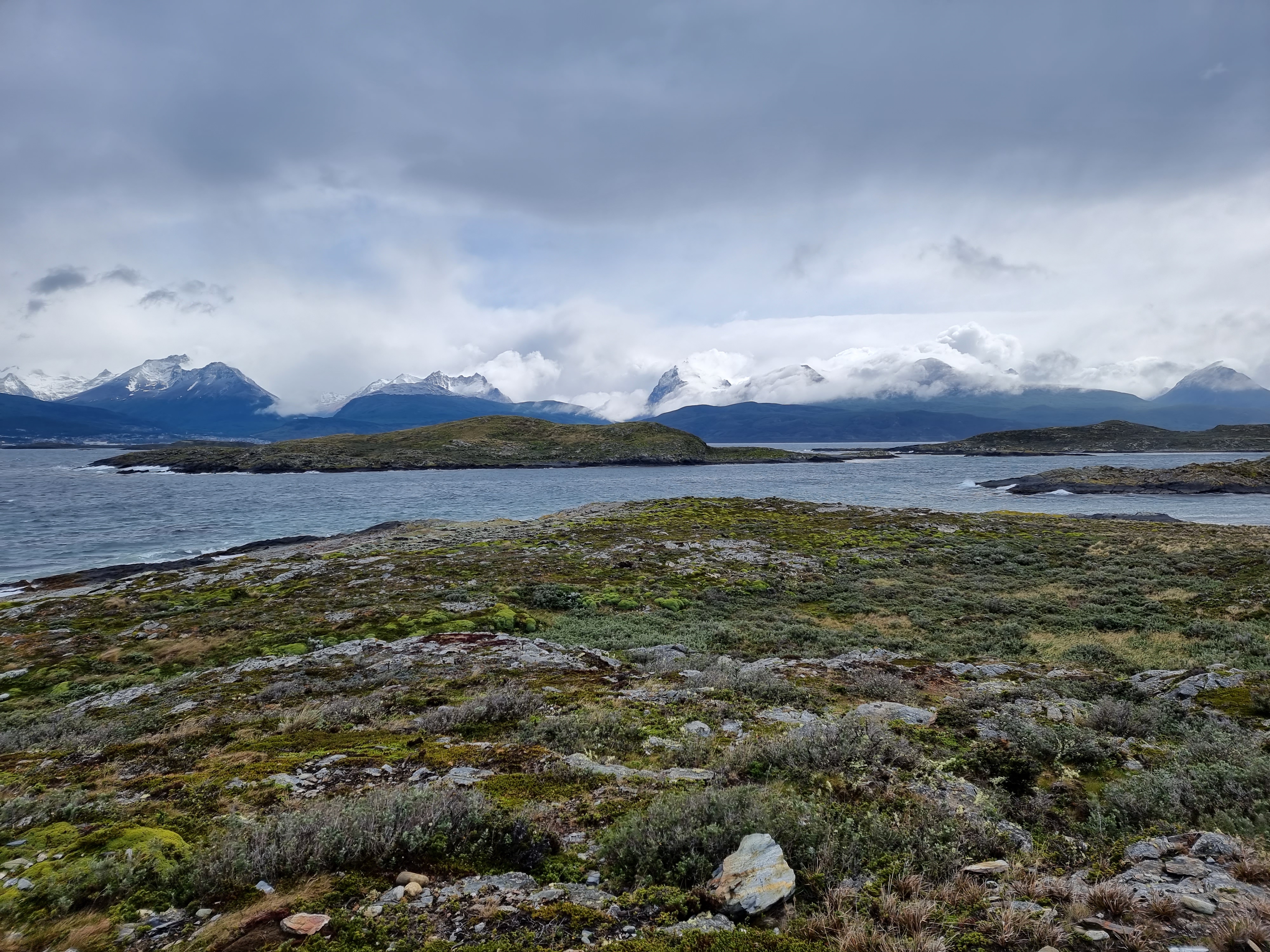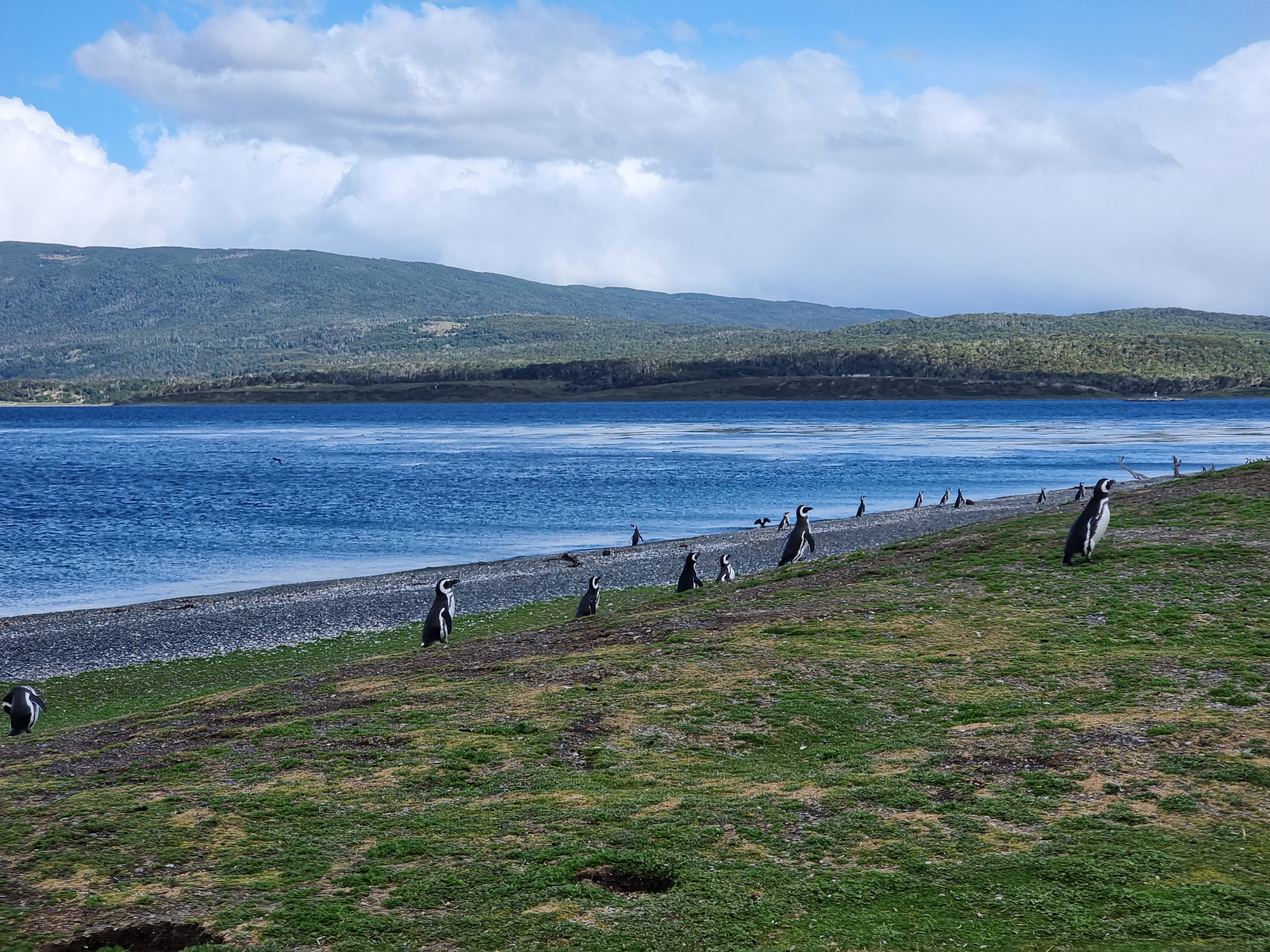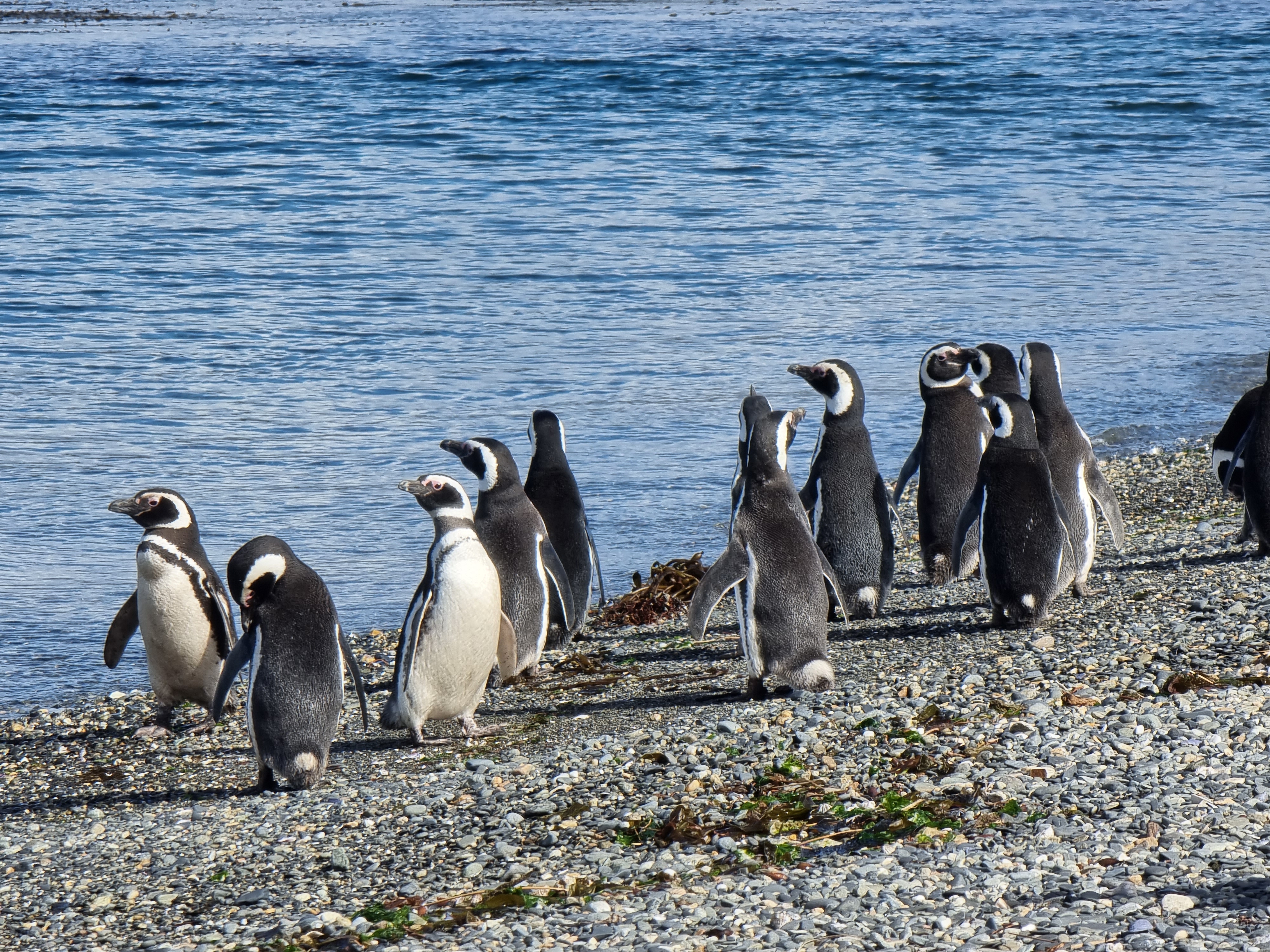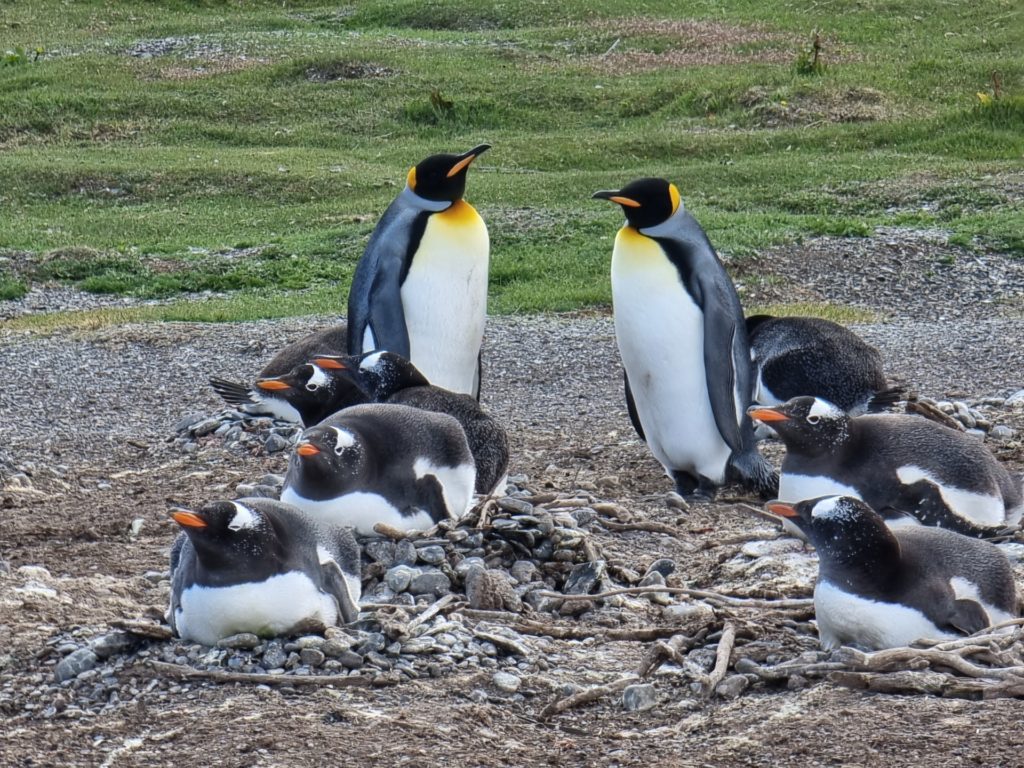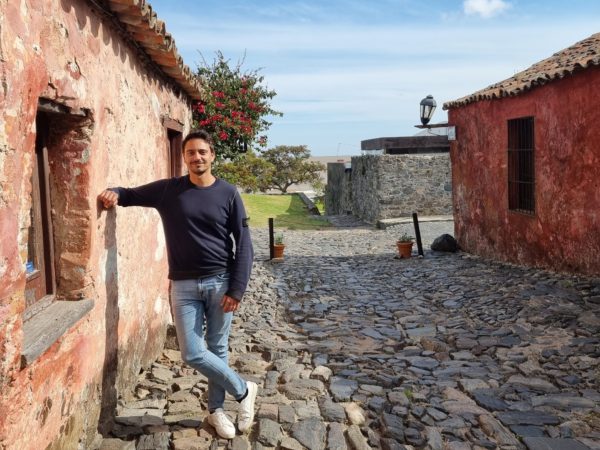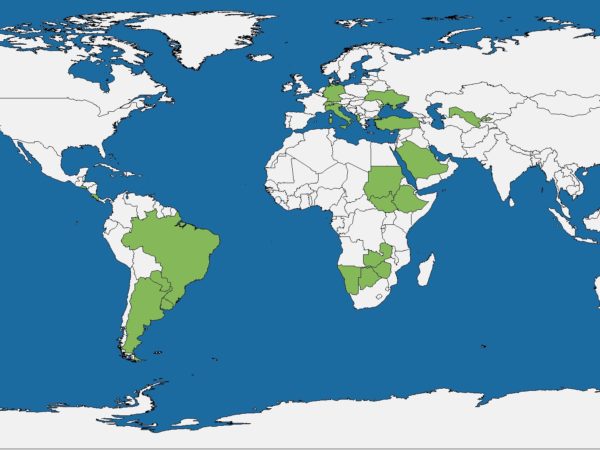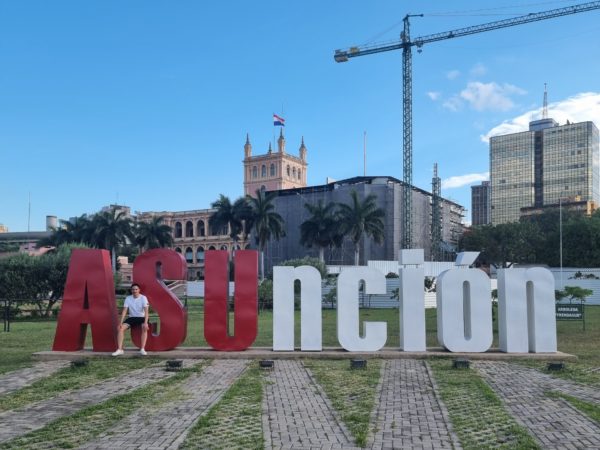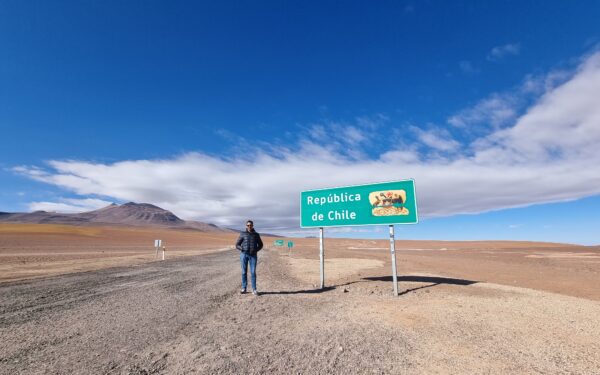Trip report: Argentina
Visited in November 2021
Argentina has been a country I’ve been dying to see for years. In fact, I think the Lonely Planet of Argentina was one of the first I bought, but a trip never happened. It even seems somewhat weird to have visited 122 countries before I finally made it to Argentina. For many travelers, Argentina is probably a country that is in the first 50 countries visited. Or at least among the first 100.
The pandemic is certainly partly to blame that it took so long for my trip to Argentina. The country closed its borders in March 2020 and then had one of the strictest lockdowns in the world. With one of the highest death rates at the same time, mind you. When Argentina’s government announced the reopening of the borders in November 2021, I didn’t hesitate for a second and booked the flight tickets to South America. And punctually on November 1 at 13.37 Kati and I crossed the border from Brazil to Argentina.
Our Route in Argentina
We spent a total of 18 days in Argentina and saw six different places in this huge country. Since a trip report describing all our activities on each day would go beyond the scope here, I will briefly describe the places we visited and then draw a conclusion about the country.
Puerto Iguazu
Most travelers enter Argentina via the capital Buenos Aires. Our entry point, however, was Puerto Iguazu in the northeast of the country. Puerto Iguazu is a small town that has a certain wild west feeling due to its buildings which remind of the 19th century. The city itself is nothing really special, but it is located next to one of Argentina’s main attractions, the Iguazu Falls.
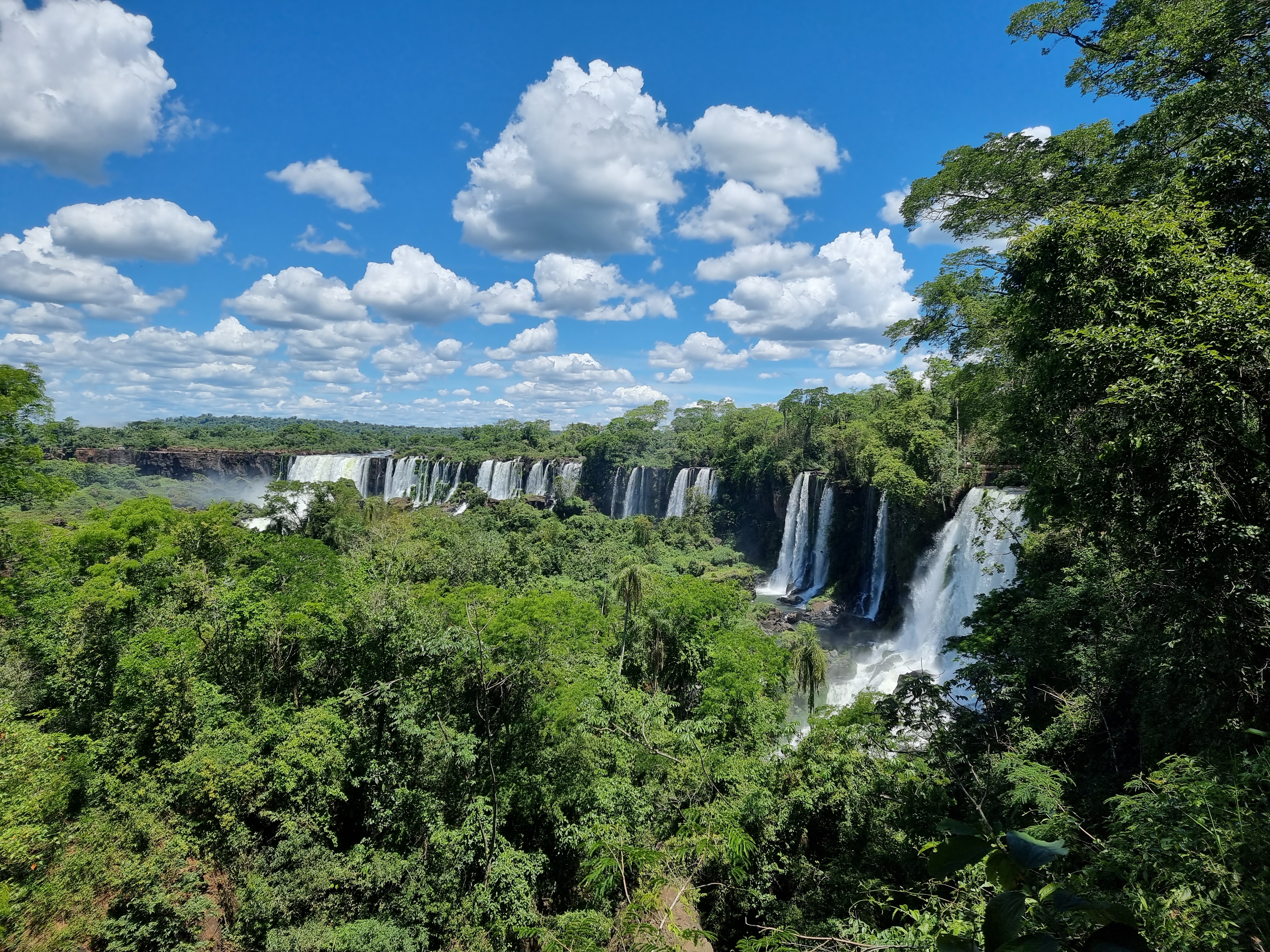
Iguazu Falls is one of the largest waterfalls in the world and can be visited from both Brazil and Argentina. Since 80% of the falls are in Argentina, the Argentine side takes a little longer to explore than the Brazilian. While you can see the Brazilian one in about two hours, you should plan at least a day for the Argentine one.
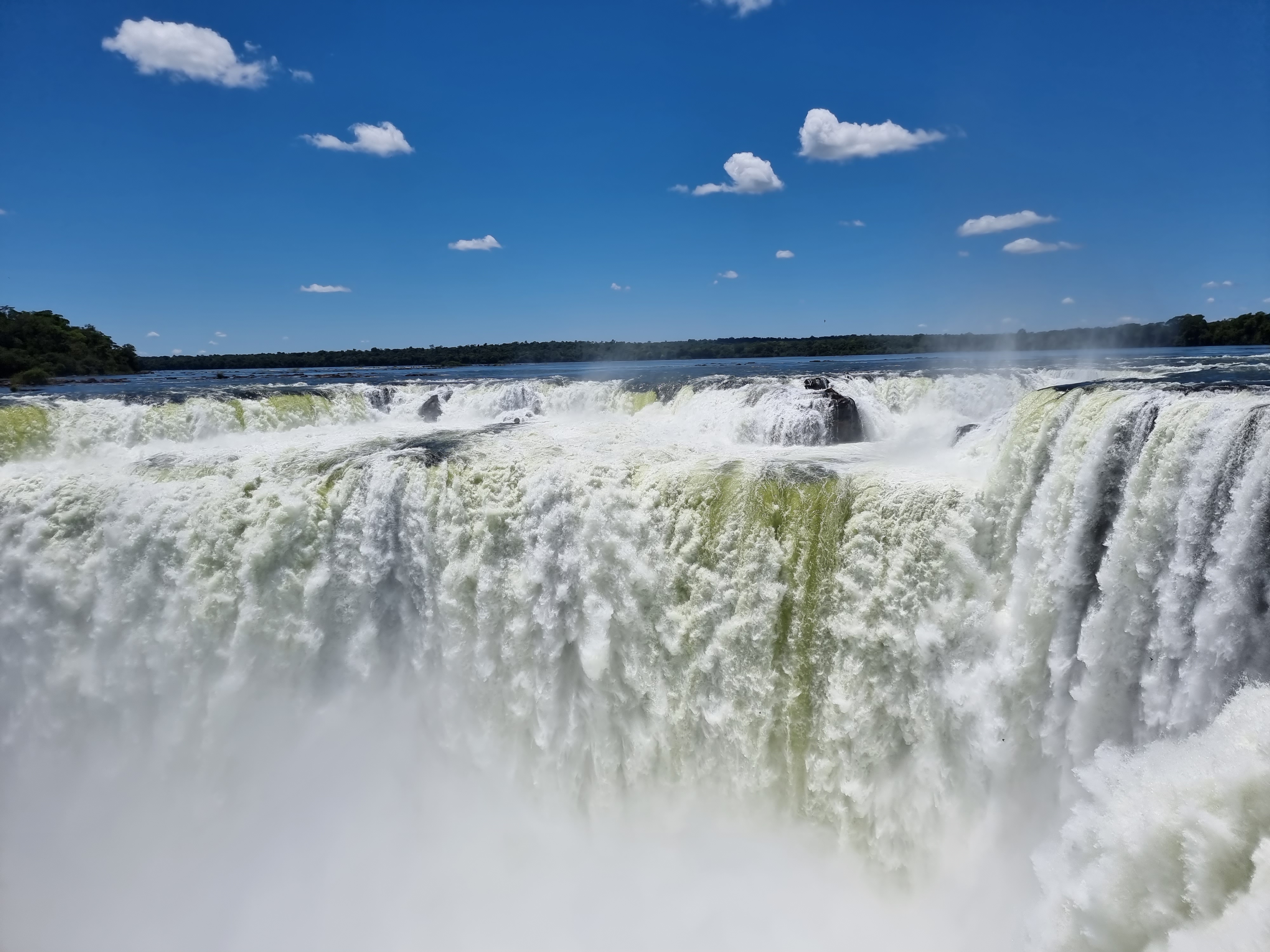
Navigating the park is a bit less easy than on the Brazilian side and the views are not quite as spectacular as in the neighboring country. Nevertheless, both sides are great and complement each other. All in all, the Iguazu Falls are simply incredible and are a must see when you visit Argentina.
Salta (and Jujuy)
One region I rarely see on Argentina itineraries is the northwest of the country. This surprises me, because the provinces of Salta and Jujuy offer landscapes like from another planet.
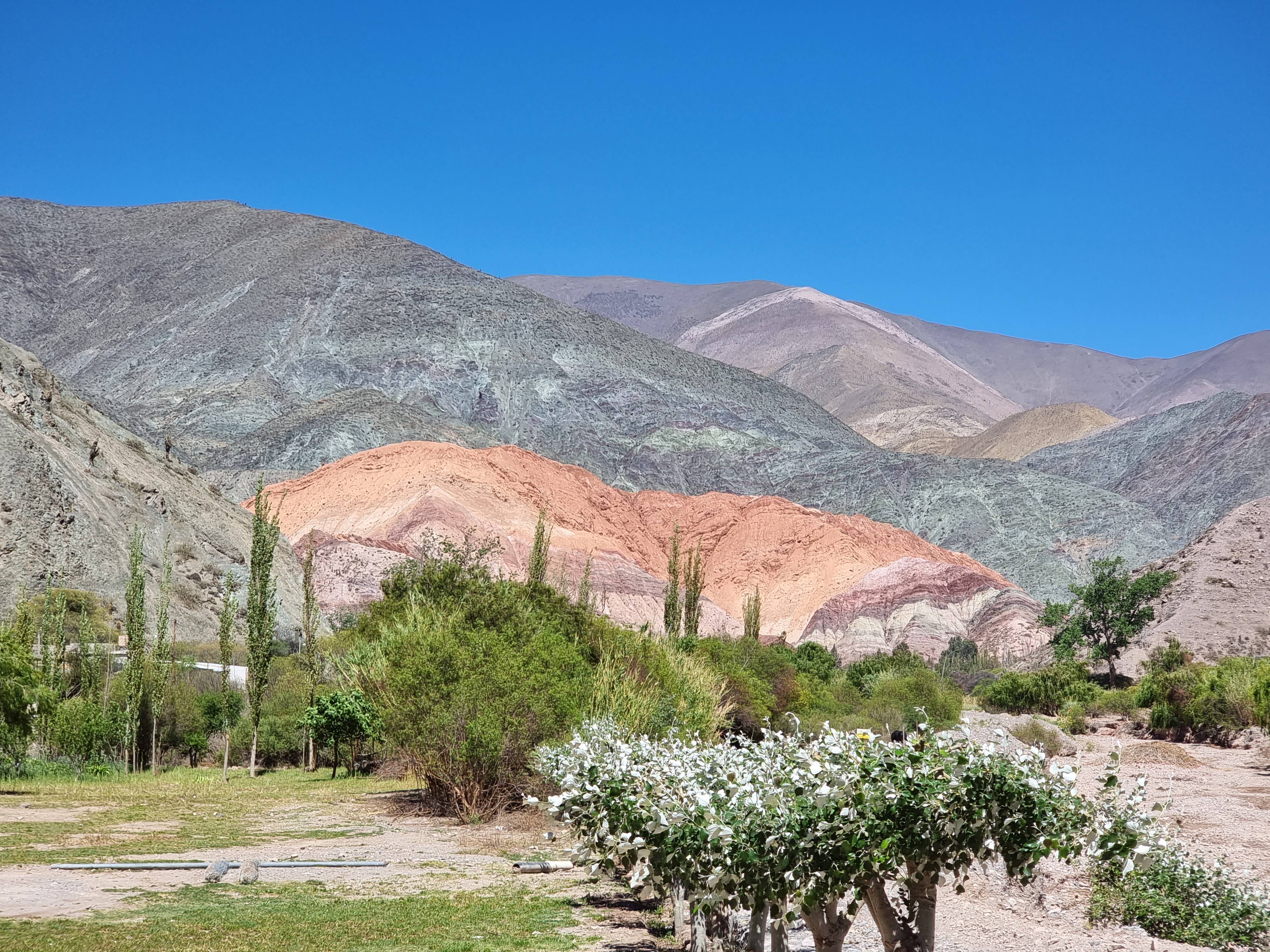
We spent four nights in Salta, the capital of the same-named province. Salta is a nice city, which is a good base for trips to the countryside of the two provinces. Both provinces somehow feel completely different from the rest of the country. The people have an indigenous look and you might as well think you are in Peru or Bolivia (the Bolivian border is actually only a few hours away).
During our stay in northwestern Argentina we explored the city of Salta in an afternoon and did three day-trips. The first two excursions took us to the province of Jujuy, where we visited the Salinas Grandes salt desert and the villages of Purmamarca and Humahuaca.
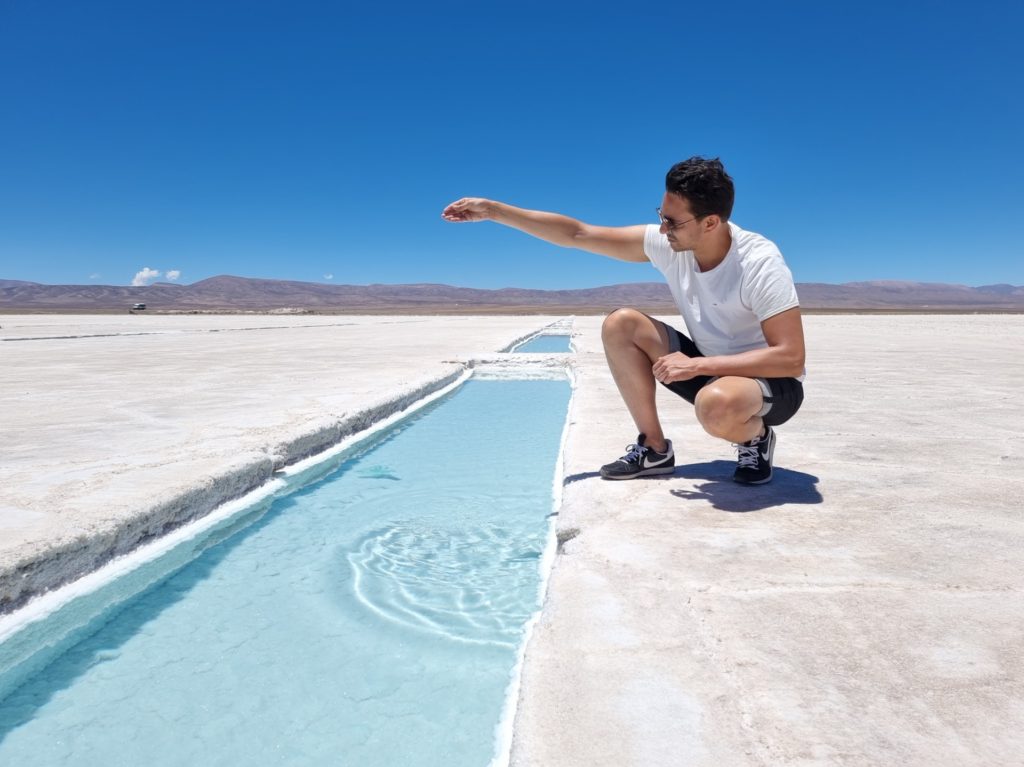
We visited Cafayate on the third day, a town famous for its wine. The famous Ruta 68 leads to this town and the scenery you see on the way is even more interesting than the town. This tour but also the two on the days before took us through incredible rocky landscapes that changed color every few kilometers. Minerals in the rocks give them, among others, the colors red, orange, purple, green, gray, sometimes even several colors in one rock.
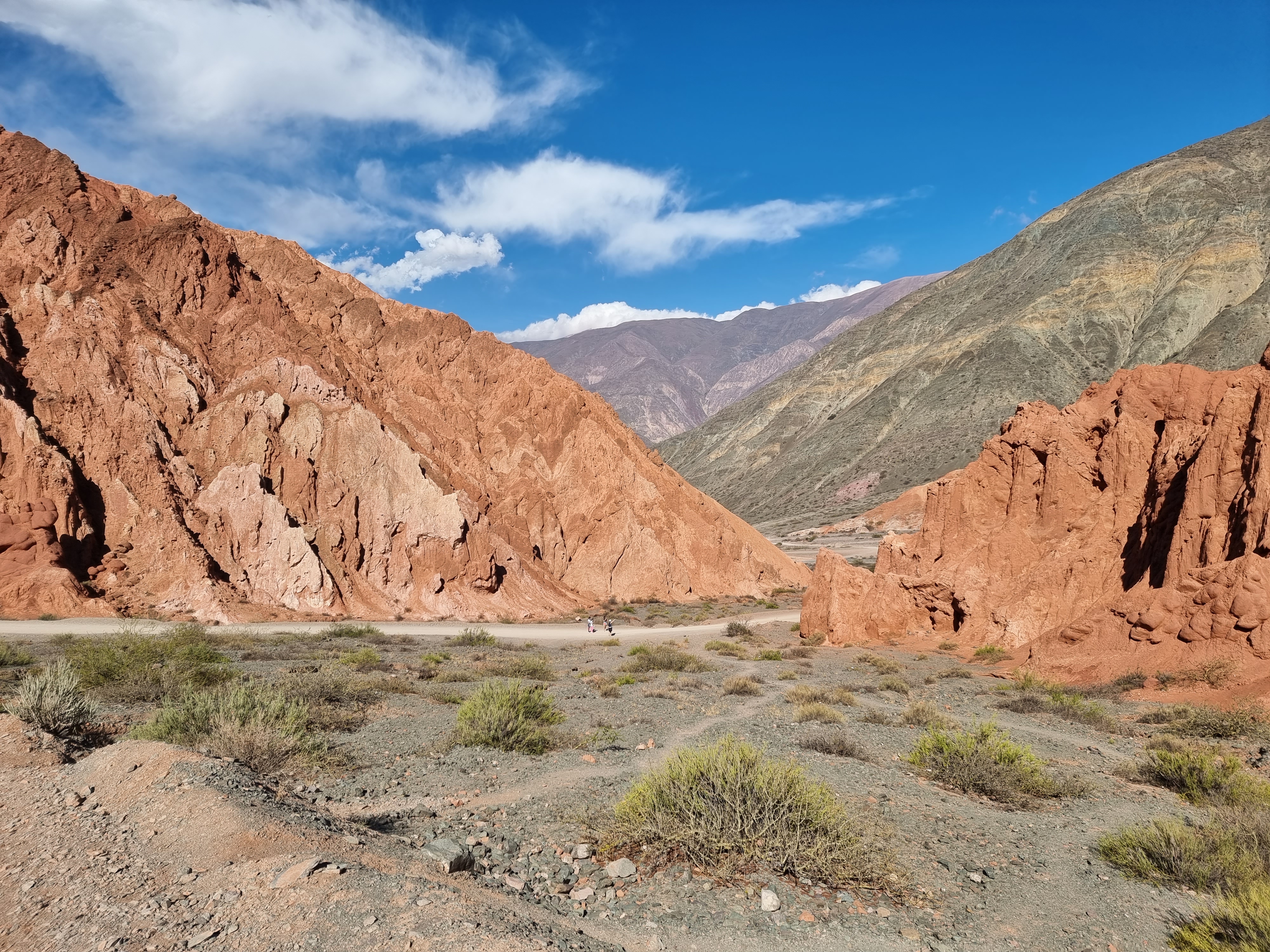
In my opinion, this often overlooked region should not be missing on any trip to Argentina, as it offers landscapes that I have not seen anywhere else in the world. At least not spread over such a large area and with constantly changing colors.
Since the drives through these landscapes were the greater highlight for me than the villages we visited, I would recommend renting a car and exploring the area yourself instead of joining a tour. This way you can enjoy the landscapes even more and skip the free time in the towns and stops for shopping, which seem to be important especially for the domestic tourists.
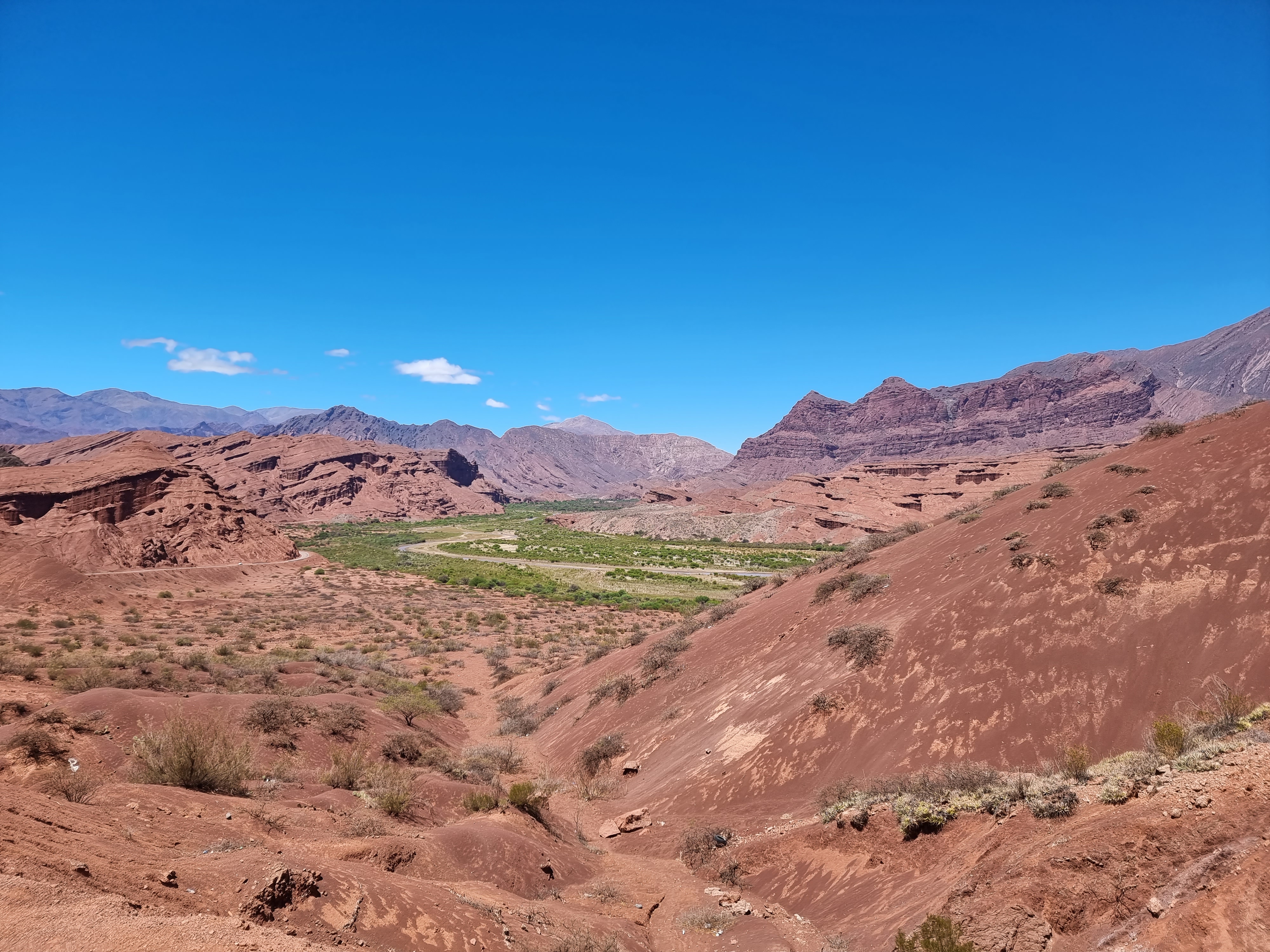
By the way, three full days are absolutely necessary in this region. And even that is pretty short, as you could easily spend a week here. Besides, you can only do the Salinas Grandes tour and skip Humahuaca, as both trips are very similar. Instead of Humahuaca, I would recommend Cachi.
Buenos Aires
Buenos Aires is the second largest city in South America and in my opinion also the best. The city offers countless things to see and do, so it’s definitely not getting boring here. Even those who are not necessarily looking for touristy activities will be happy in Buenos Aires. The vibe of the city is incredibly cool, every street feels busy and it never seems to get quiet.
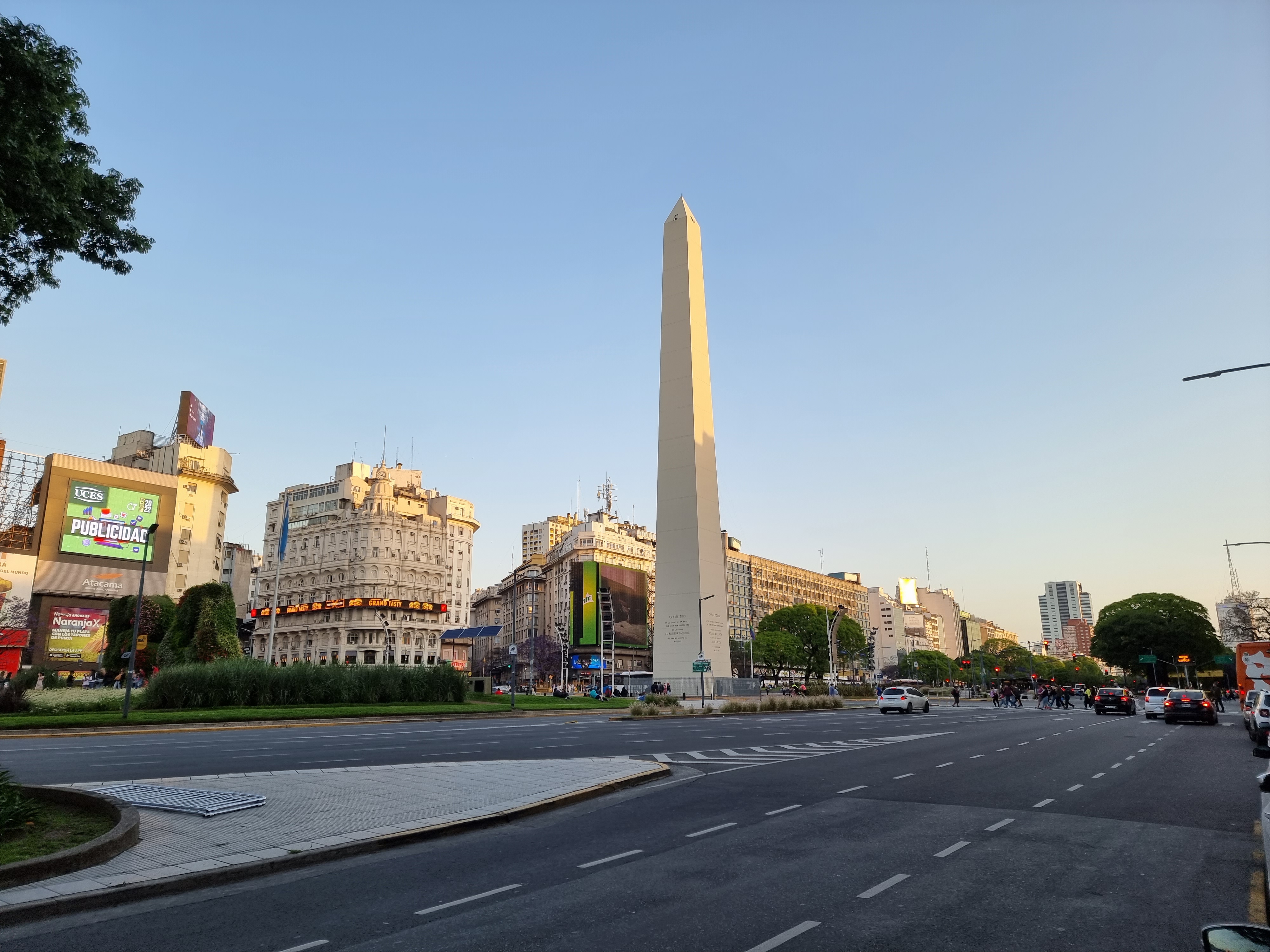
We spent a total of four days in Buenos Aires, which is of course not enough to see everything in a city of this size. We have always discovered new, interesting things, which is also due to the fact that the city has very different neighborhoods. No matter if the posh neighborhood Recoleta, the Centro with all its sights and shopping possibilities or the colorful La Boca – each quarter has its own character and also its own charm. As a result, the visitor gets a very diverse city that should provide something for every taste.
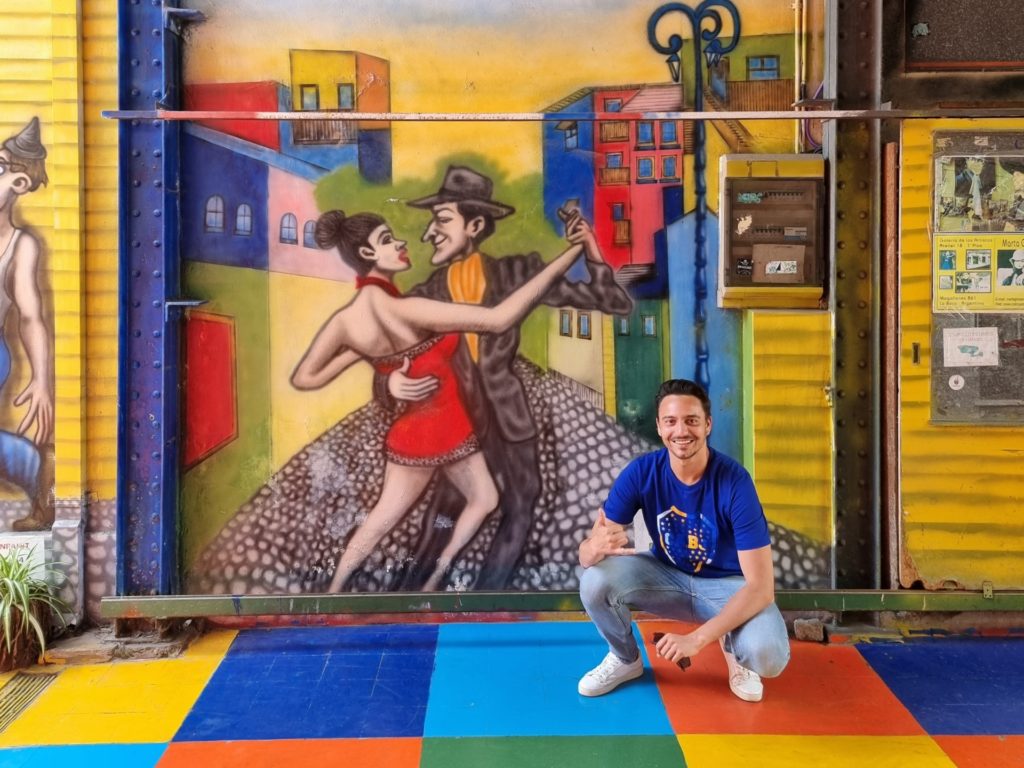
Besides, Buenos Aires is by far the most European city in South America. The city has influences from so many European cities. Some corners remind of Paris, others of Madrid… some alleys remind of Italy, the port of Hamburg. So Buenos Aires is a melting pot of cultures, as is the whole country.
What really fascinated me was the jaw-dropping architecture. Buenos Aires is a majestic city where one architectural masterpiece follows another. Interestingly, there are so many imposing buildings that most of them don’t even make it into travel guides or on TripAdvisor.
The same goes for small squares with statues and green spaces. Sure, everyone who goes to Buenos Aires knows the Plaza de Mayo. But what about all the other beautiful squares in the city? In most European cities, those would probably be one of the top5 landmarks. In Buenos Aires, there are just too many of them, so some beautiful ones are not even worth mentioning.
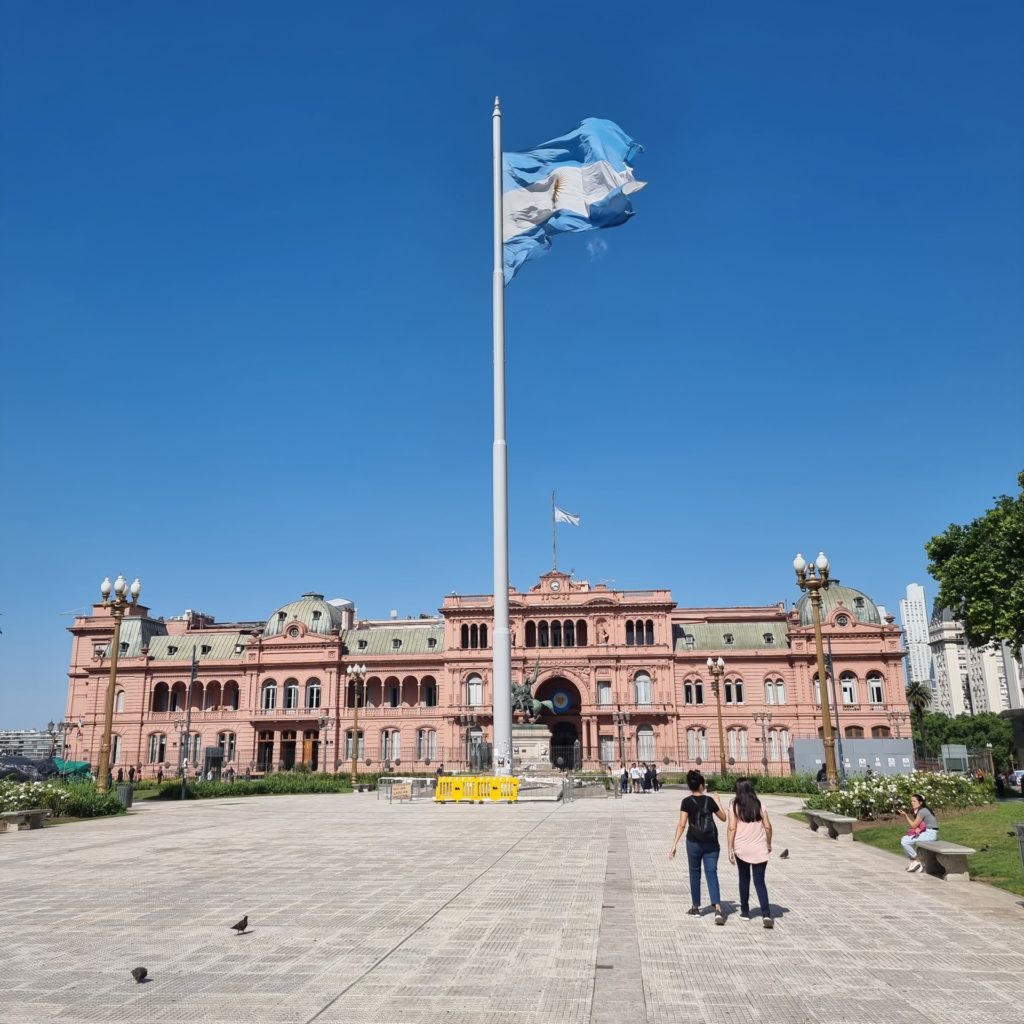
Long story short, I was delighted by Buenos Aires. A phenomenal city that I have certainly not seen the last time. The only pity was that because of the pandemic some places like the Recoleta cemetery were closed.
El Chaltén
A three-hour flight took us from Argentina’s capital to Patagonia. From the airport in El Calafate we traveled another three hours by bus to El Chaltén. El Chaltén is a small village with only a little more than 1,000 inhabitants, but it is also the self-proclaimed trekking capital of the country.
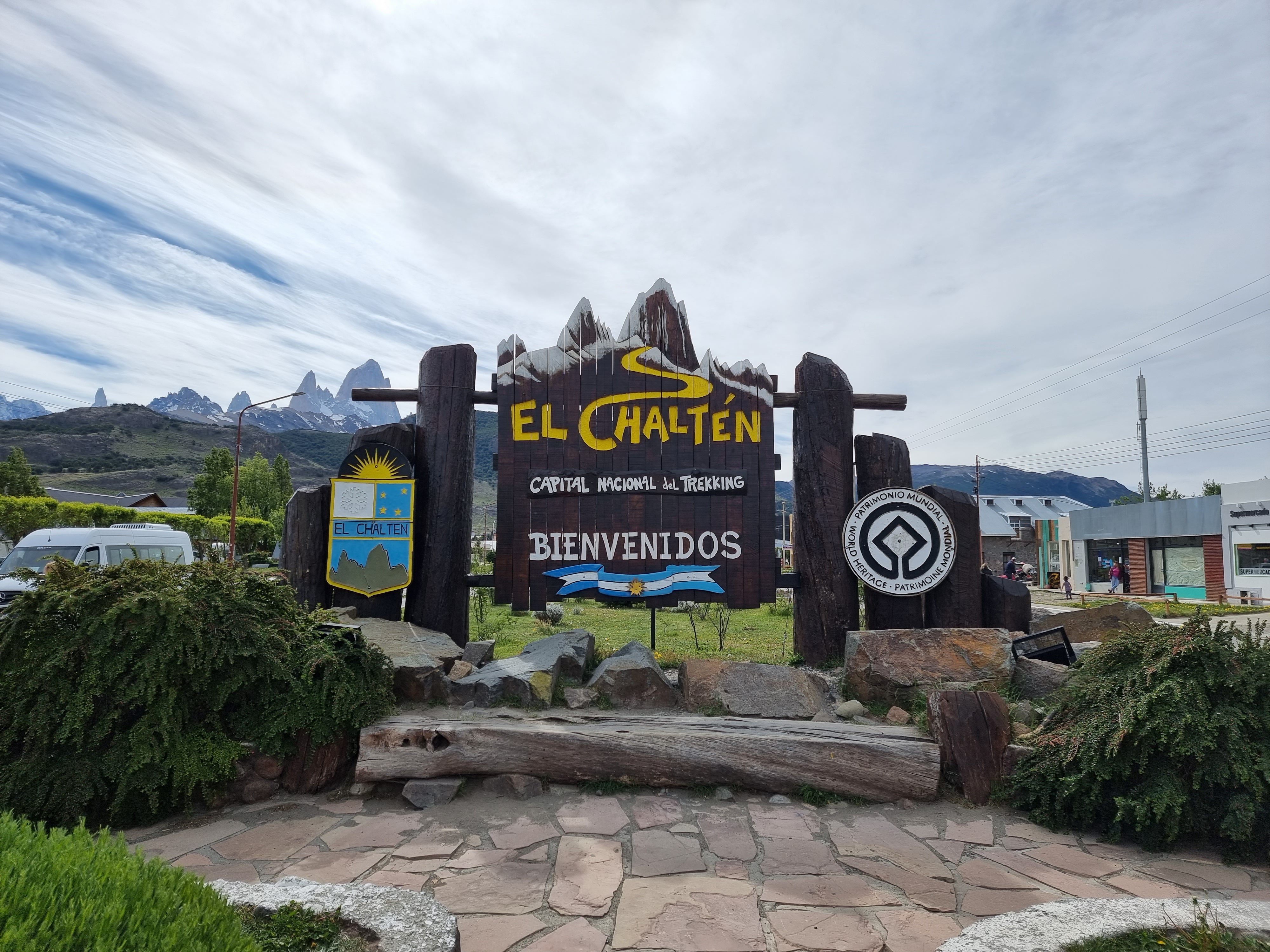
The further south you travel in Argentina, the tougher the weather becomes. In El Chaltén, it’s mainly the wind that poses a challenge on some days. That’s why the locals use a Czech app that was actually developed for surfers to predict the wind. The village is surrounded by mountains and hills, and honestly, if you don’t like hiking, you can save yourself the trip here.
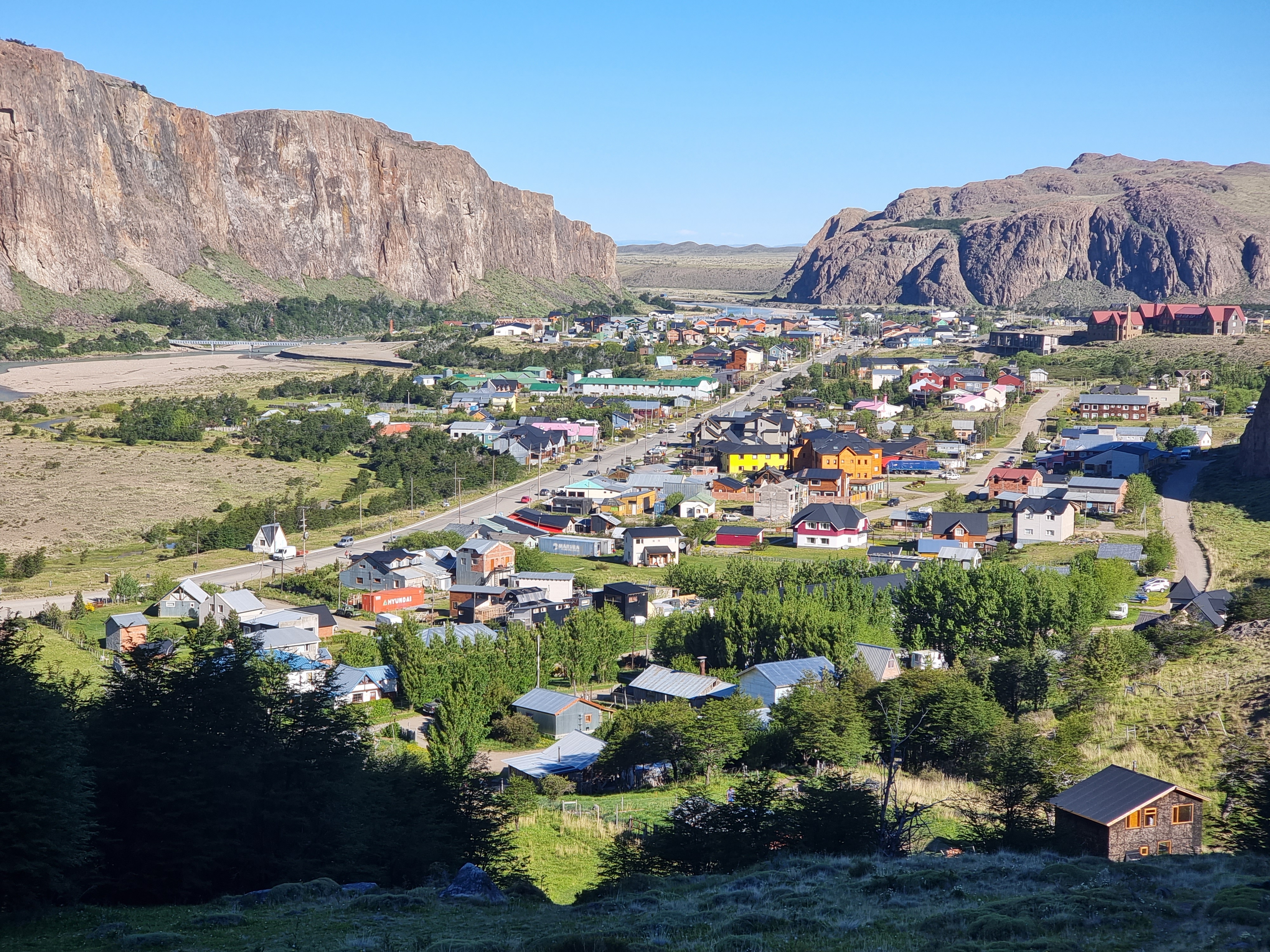
Besides some mini-hikes and strolls, there are two main hikes for which travelers come to El Chaltén. The easy of the two leads to Laguna Torre (6 hours) and the more challenging one to Laguna de Los Tres (8 hours). We had two full days in El Chaltén and since the weather was outstanding on our first day (sunny and no wind), we opted for the more difficult hike to Laguna de Los Tres first.
The hike to Laguna de Los Tres is also often called the Fitz Roy hike. It leads you past beautiful nature and ends at one of the most impressive viewpoints Argentina has to offer. Although you only ascend about 860 meters in eight hours, it is the duration that makes this hike challenging.
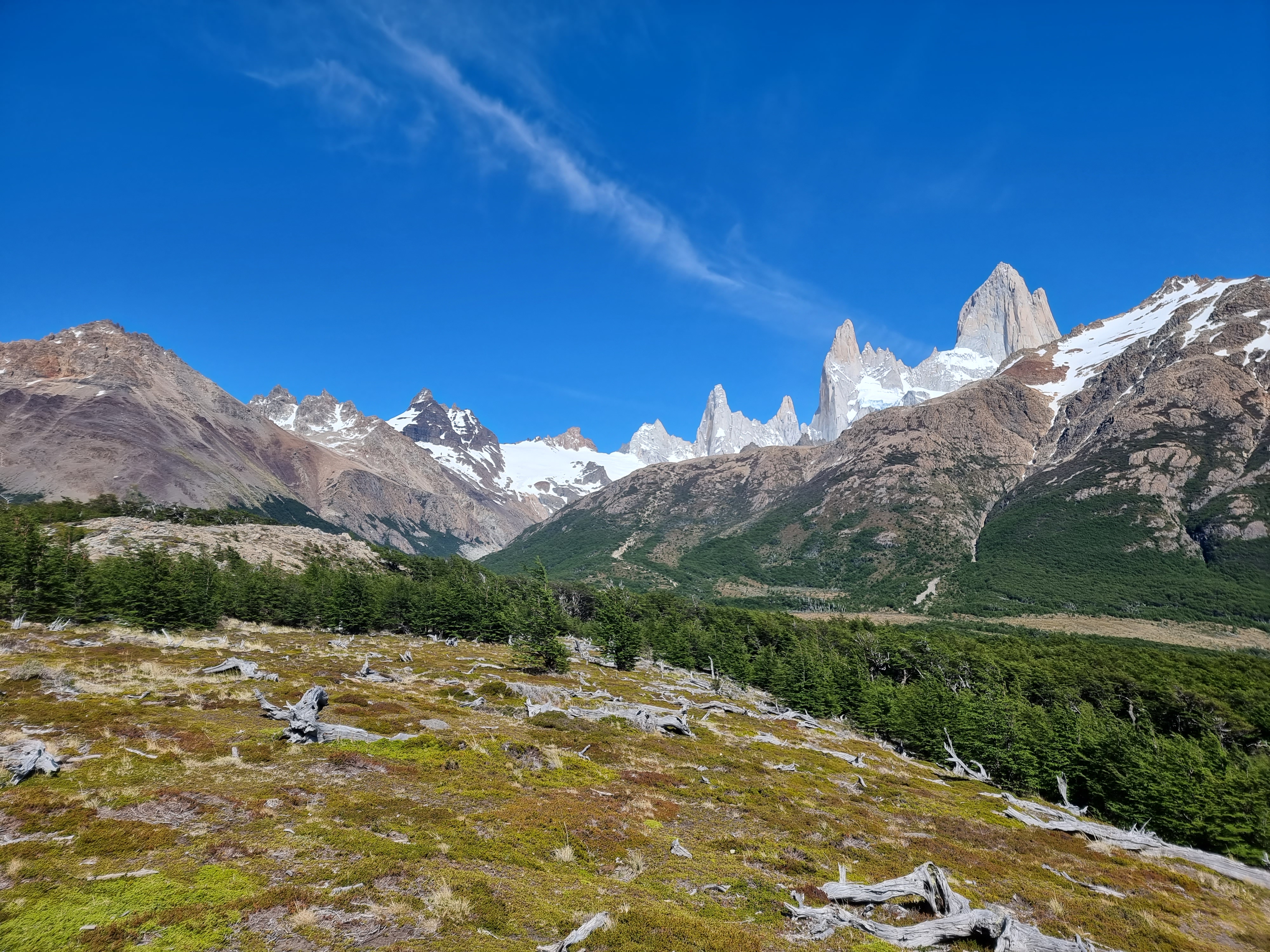
The last hour before you reach the lagoon is pretty hardcore. Here you cover about 400 meters of altitude in one hour. So it’s a steep climb and without a doubt the most difficult part of the hike. But once you get to the top, you know why you took this effort.
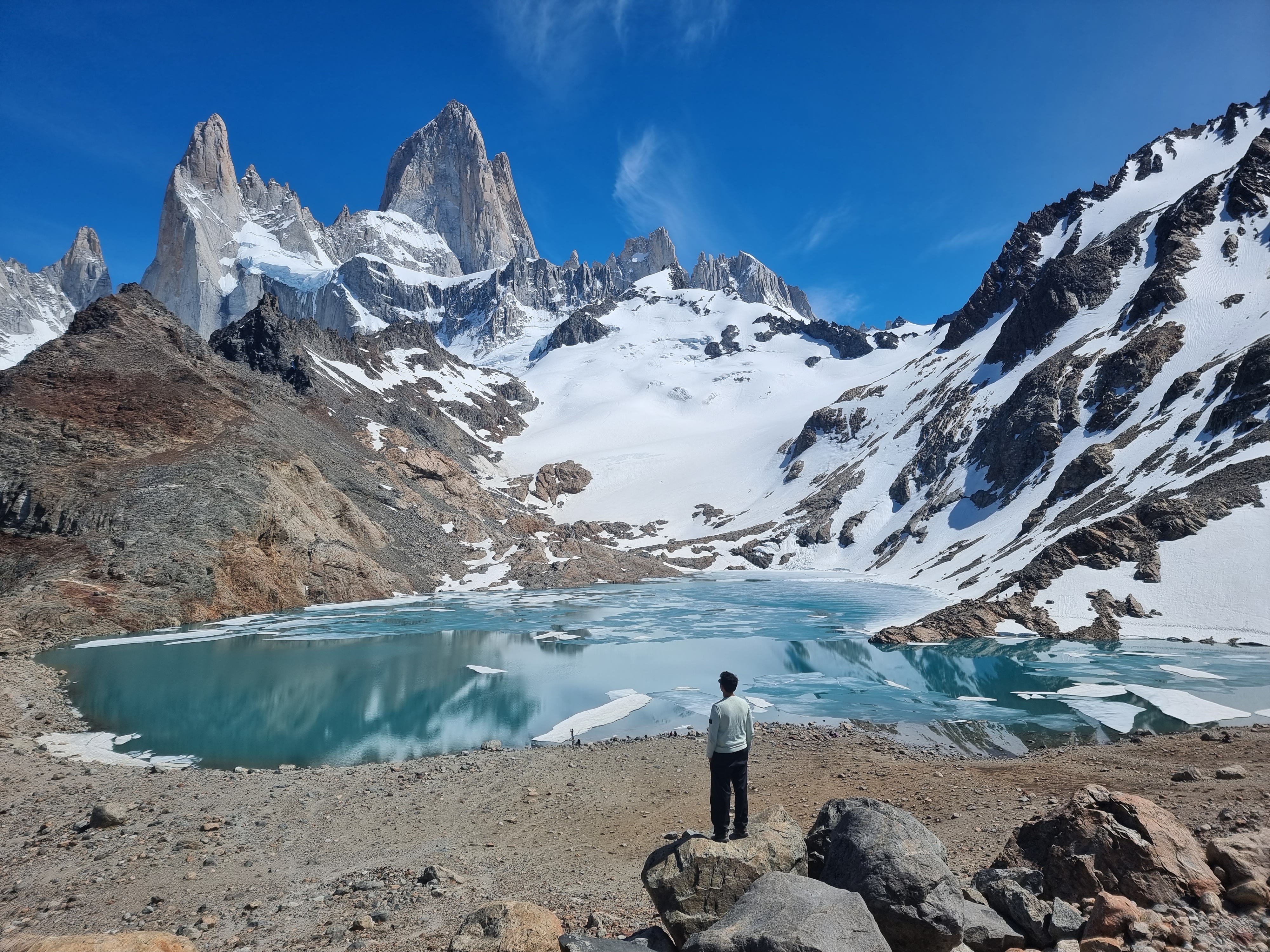
The second hike is indeed a bit easier. Although the first 30 minutes can be strenuous, you will reach Laguna Torre in about three hours. In my opinion, the lagoon cannot really compete with the magnificent Laguna de Los Tres we saw the day before. Therefore, the second hike was all in all okay, but honestly I would say that it’s not the end of the world if you miss it.
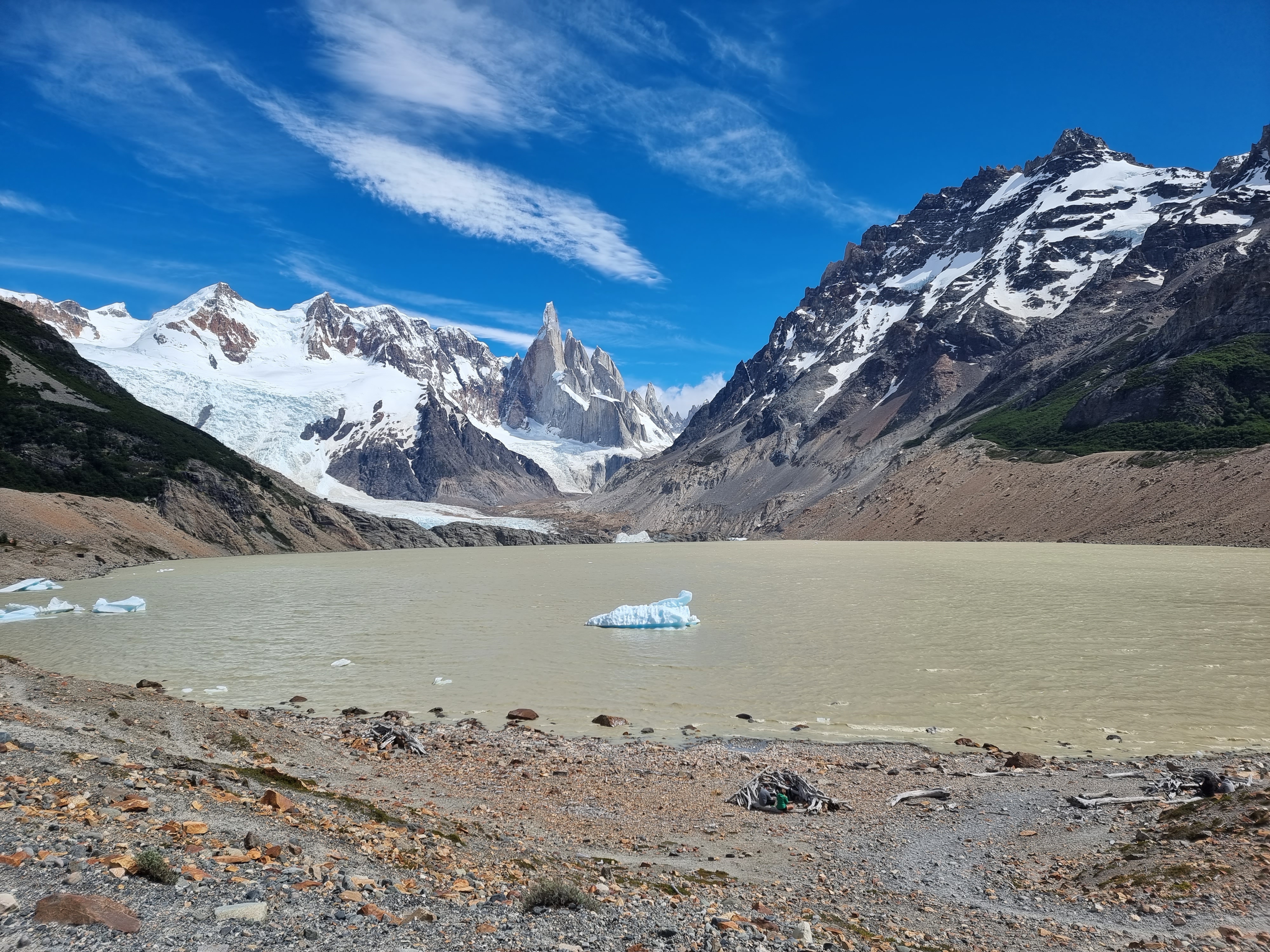
The nature is basically the same on both hikes, the lagoon itself…. you can judge for yourself if it’s worth walking six hours for it, especially if you did the Fitz Roy hike the day before. If you only have one full day in El Chaltén, you should definitely prioritize the Fitz Roy hike.
El Calafate
Unlike El Chaltén, El Calafate is a small town and not a tiny village. There is nothing really worth mentioning about El Calafate, but tourists come here not because of the town but because of another top attraction of Argentina: the Perito Moreno glacier.
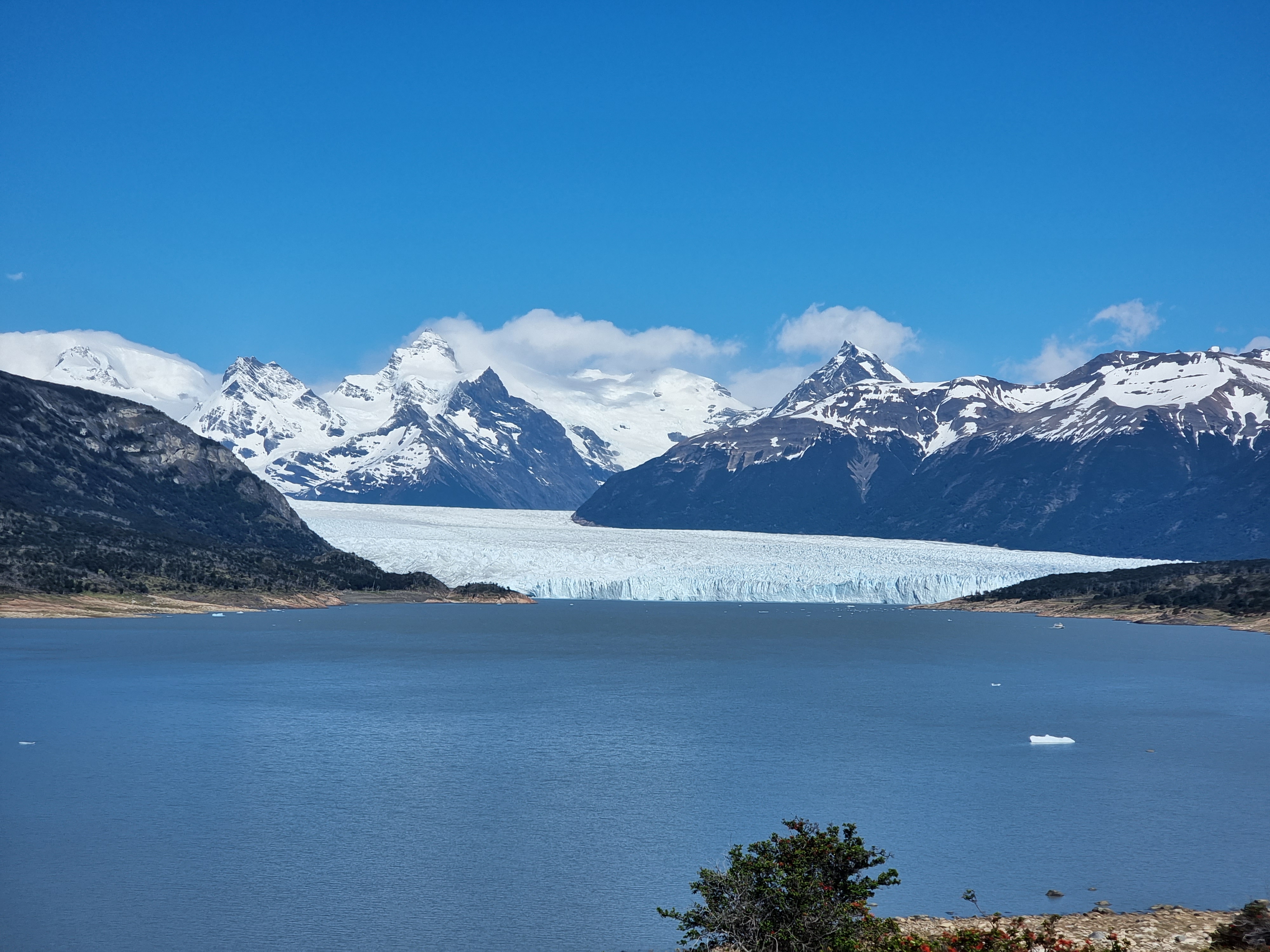
The Perito Moreno glacier is one of the most famous glaciers in the world and an important tourist attraction in Argentina. It is located in a national park about an hour drive from El Calafate. We took a bus in the morning and spent half a day in the national park. In the park there are several trails that you can walk along to see the glacier from different perspectives.
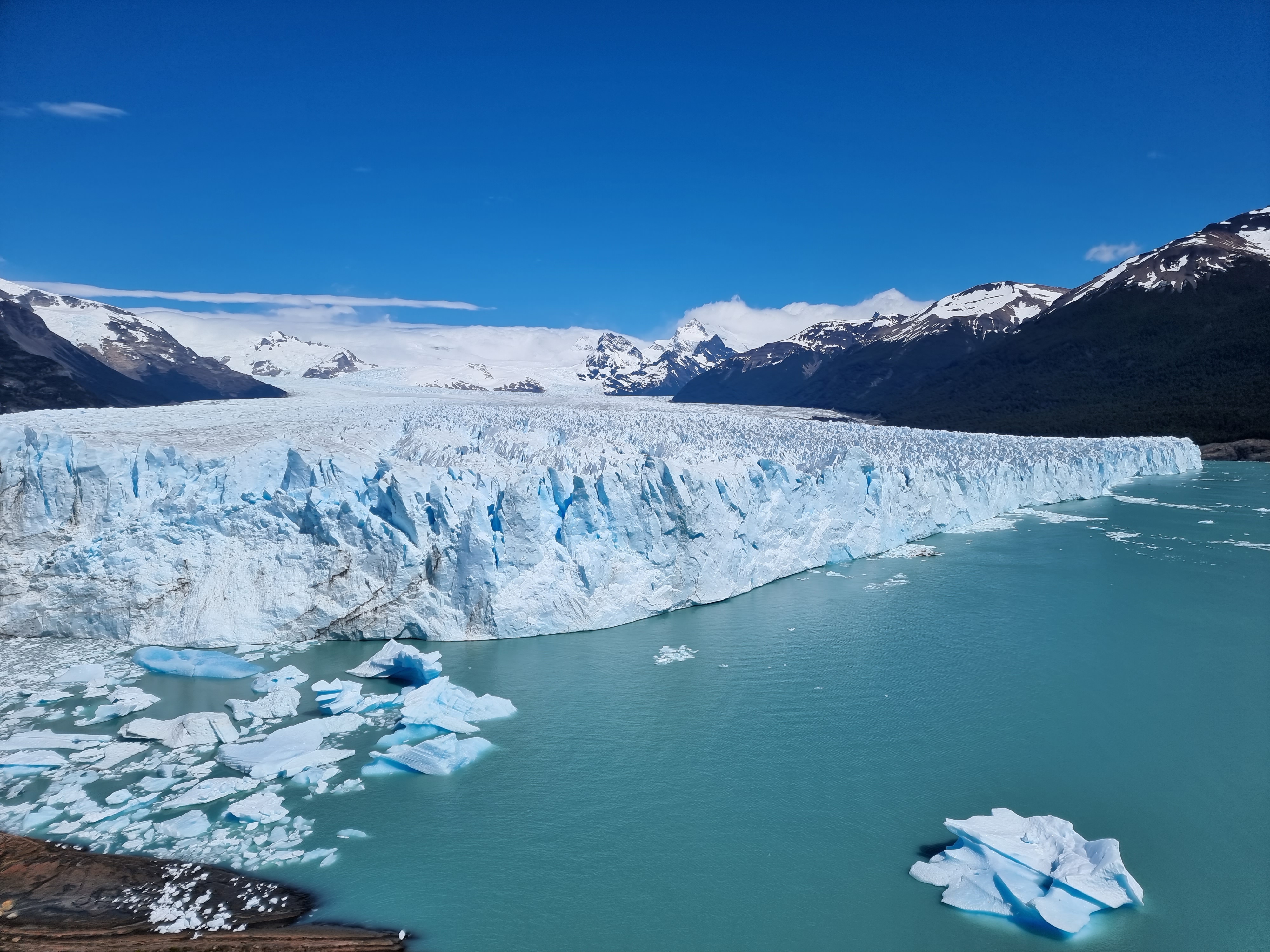
The glacier is indeed an impressive natural spectacle. Every few minutes, a layer of ice somewhere falls down into the water with a thundering sound. Amazing. Although we had been told to prefer the red and yellow of the four colored trails, I found the blue one by far the best from the view.
If the four trails in the park are not enough, you can take a boat trip as well. The price of 3,000 pesos is rather expensive by Argentine standards, but you get closer to the glacier than via the walking trails.
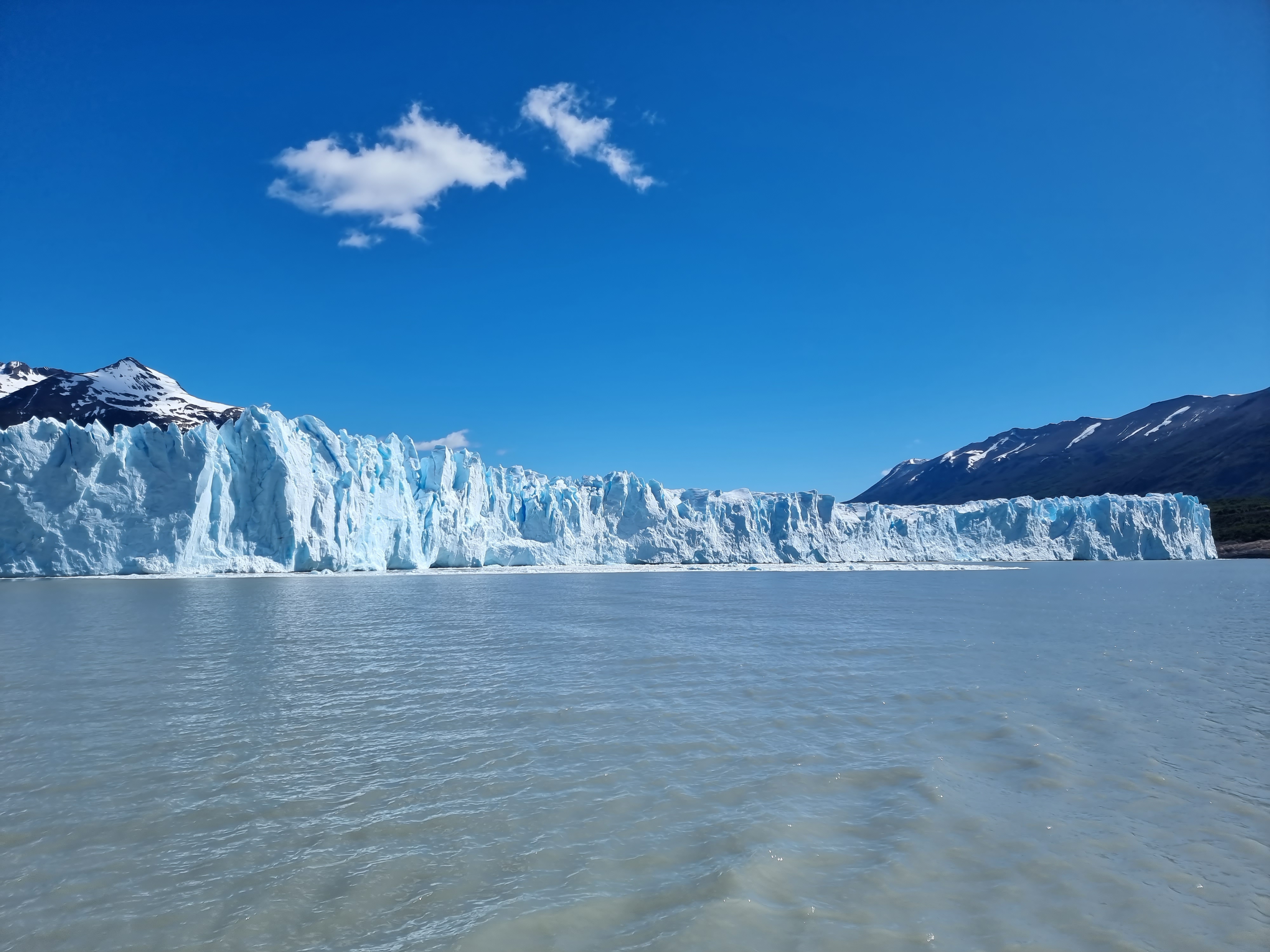
If you want to get even closer, you can take a hike on the glacier itself. The price tag for this, however, is in the range of USD 250 and more.
Ushuaia
Ushuaia, el fin del mundo, the end of the world. The southernmost city in the world. More than 3,000 kilometers from Buenos Aires but only 1,000 kilometers from Antarctica. Most expeditions to the seventh continent start from here.
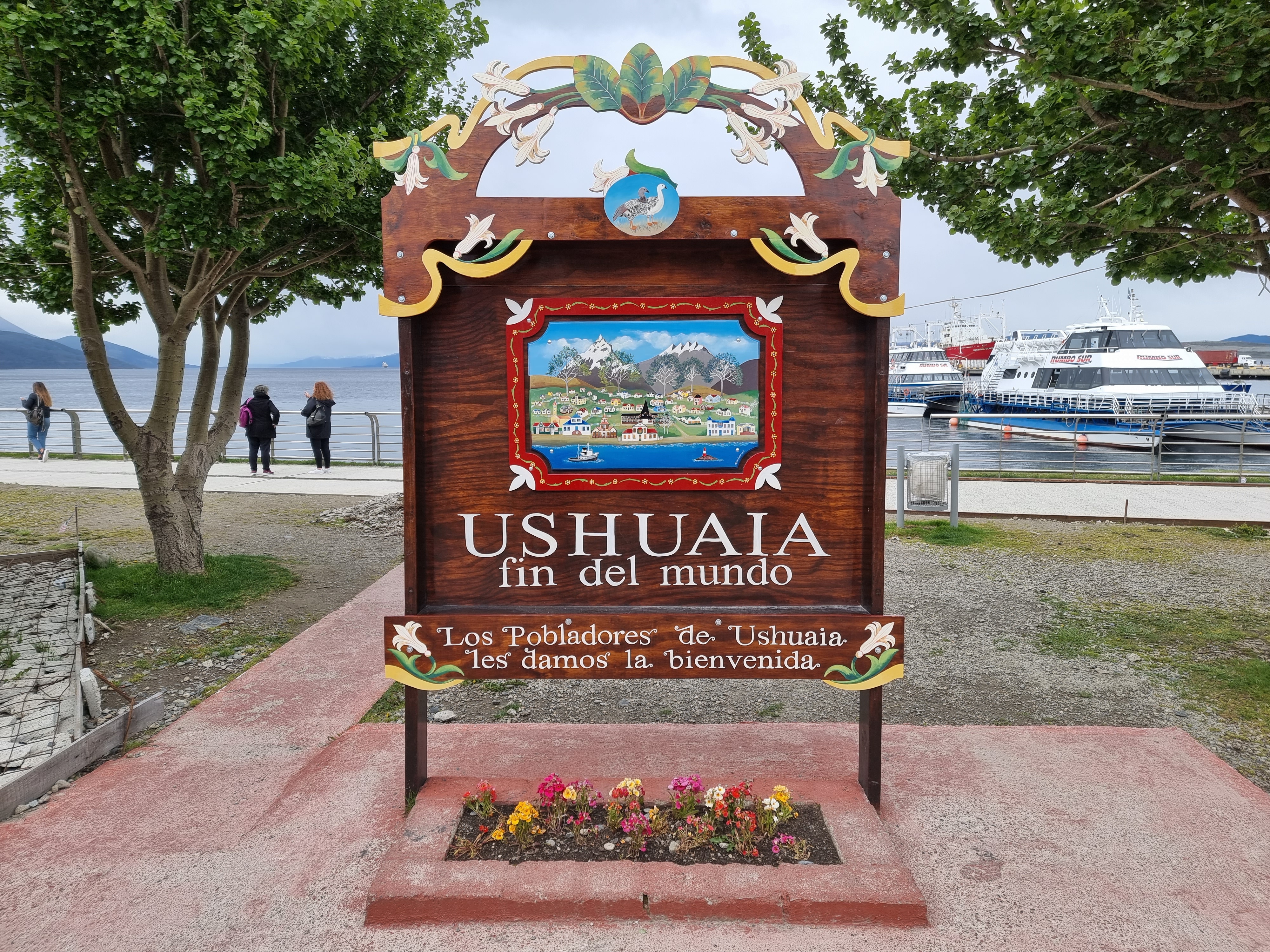
Ushuaia is probably the quirkiest place in Argentina. A city in the middle of nowhere, the next city is a whole three hours drive away. On top of that, the weather is like nowhere I’ve ever seen before. They say you can experience four seasons in one day in Ushuaia. I found that was possible even in one hour. The weather often changed within minutes from sunshine, to snow, then to fog and icy wind.
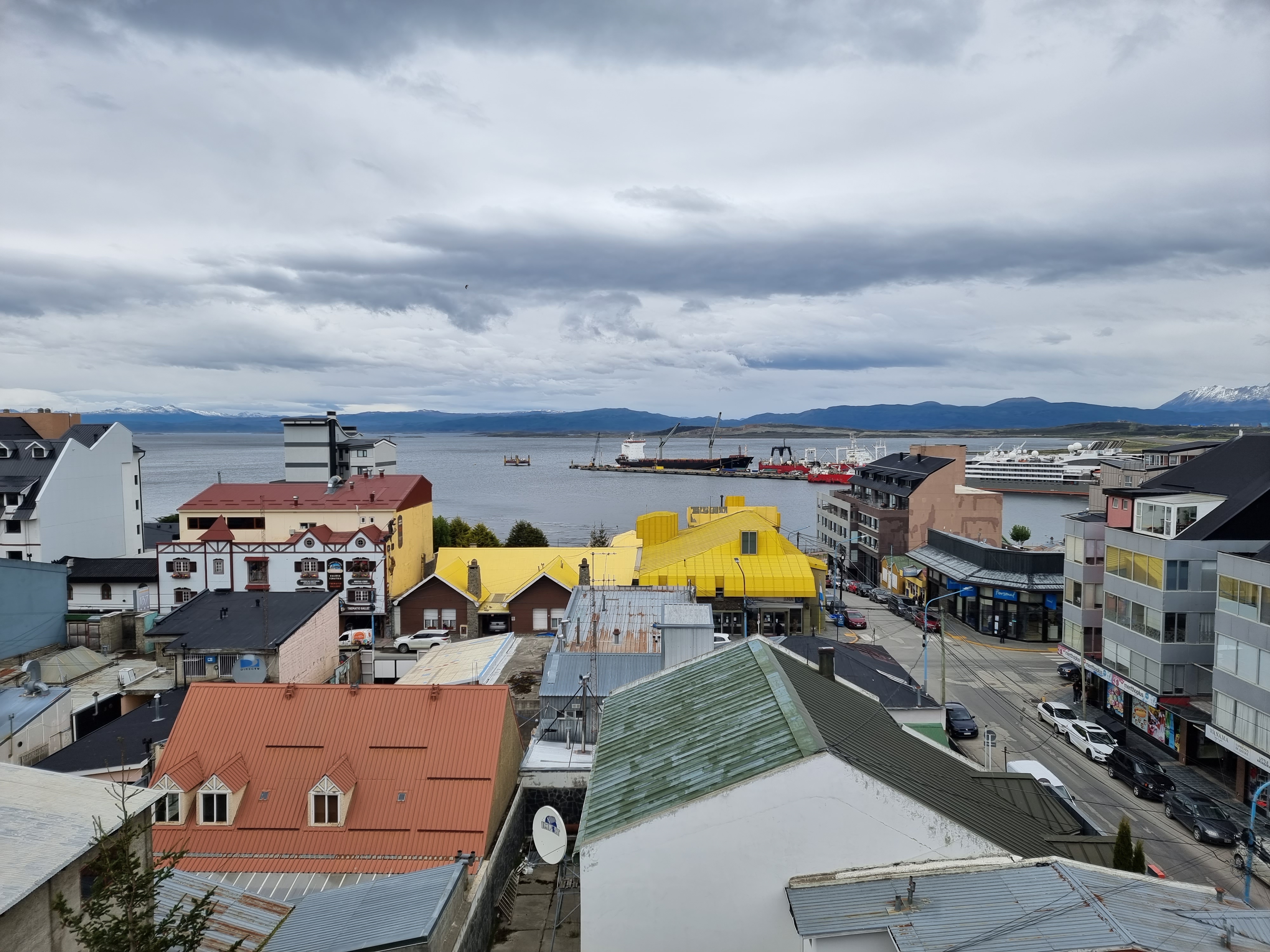
The wind is brutal. Seriously. “Because of the wind, we are 100,000 here and not eight million,” one local laughingly said. In fact, I wondered what makes people move here. The answer is simple: money. Argentina attracts companies to Ushuaia with massive tax benefits. Therefore, these companies pay their employees about three or four times what they would earn in Buenos Aires.
We visited Ushuaia mainly because you can see penguins in their natural habitat there. However, the area around Ushuaia offers a few other things. For example, we hired a cab driver to drive us through Tierra del Fuego National Park for three hours for 6,000 pesos.
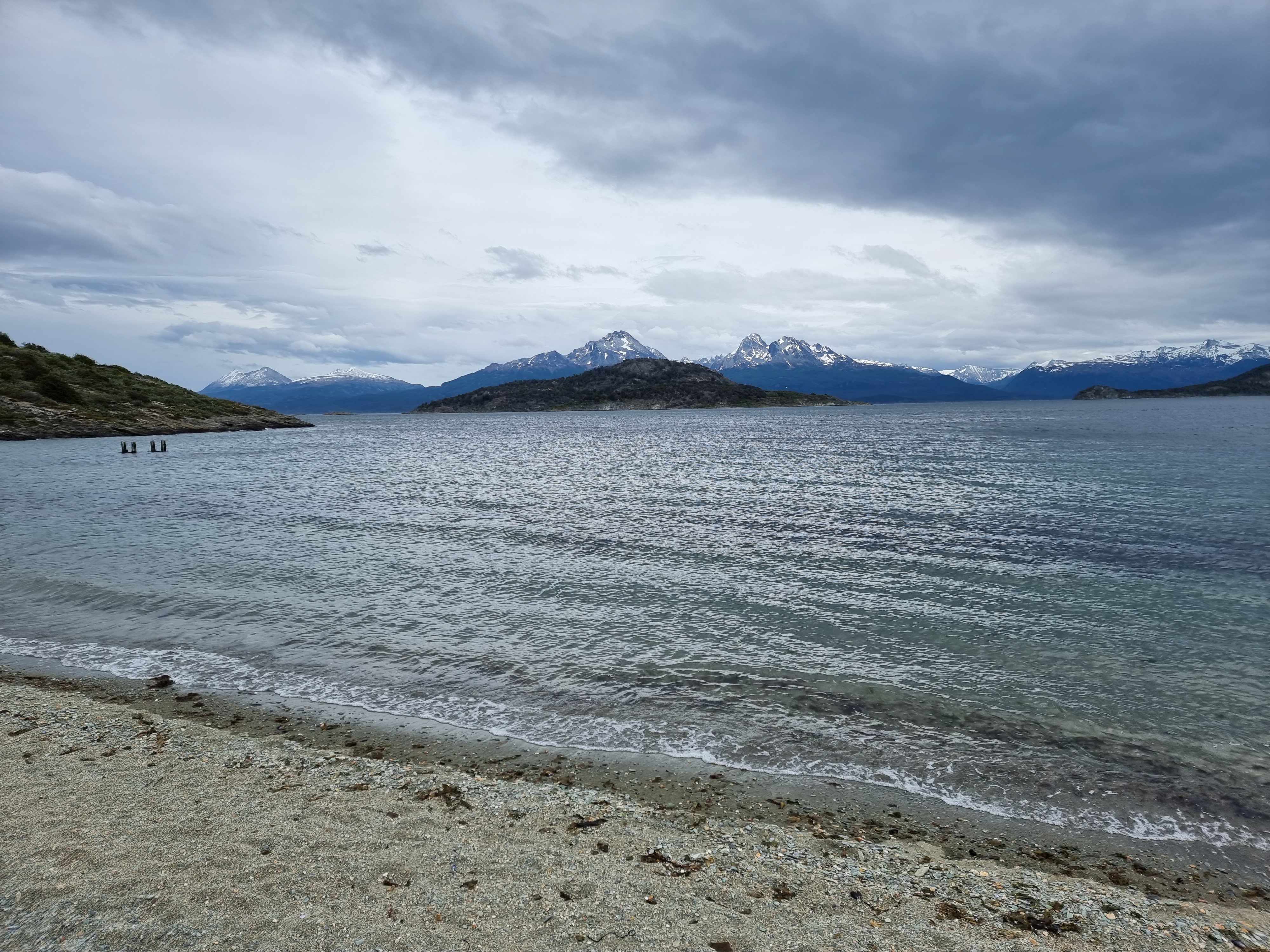
The national park also features some hiking trails. With the cold temperatures and the nasty wind, we were glad though that the driver just drove us to the interesting places. The park has some nice spots and shows how the raw, wild nature looks here at the end of the world. Besides, the park is also the final point of the Pan-American Highway, which leads from Alaska to Argentina’s southernmost tip.
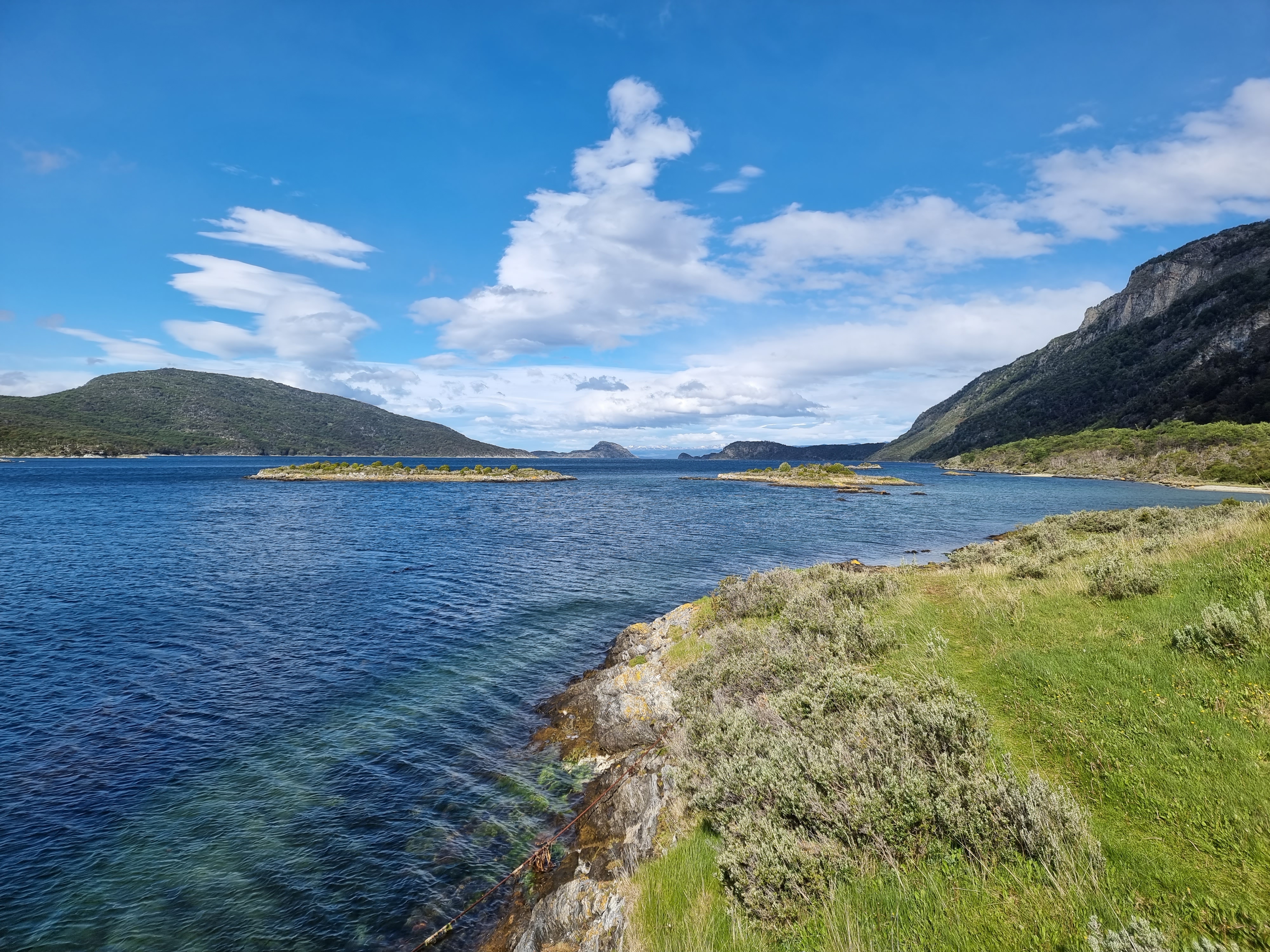
On our second day, we took a Beagle Channel cruise in the morning, where you pass some islands between the Argentine and Chilean border and can see sea lions and the penguin-like cormorants. The cruise is fun and in my opinion a must do when in Ushuaia.
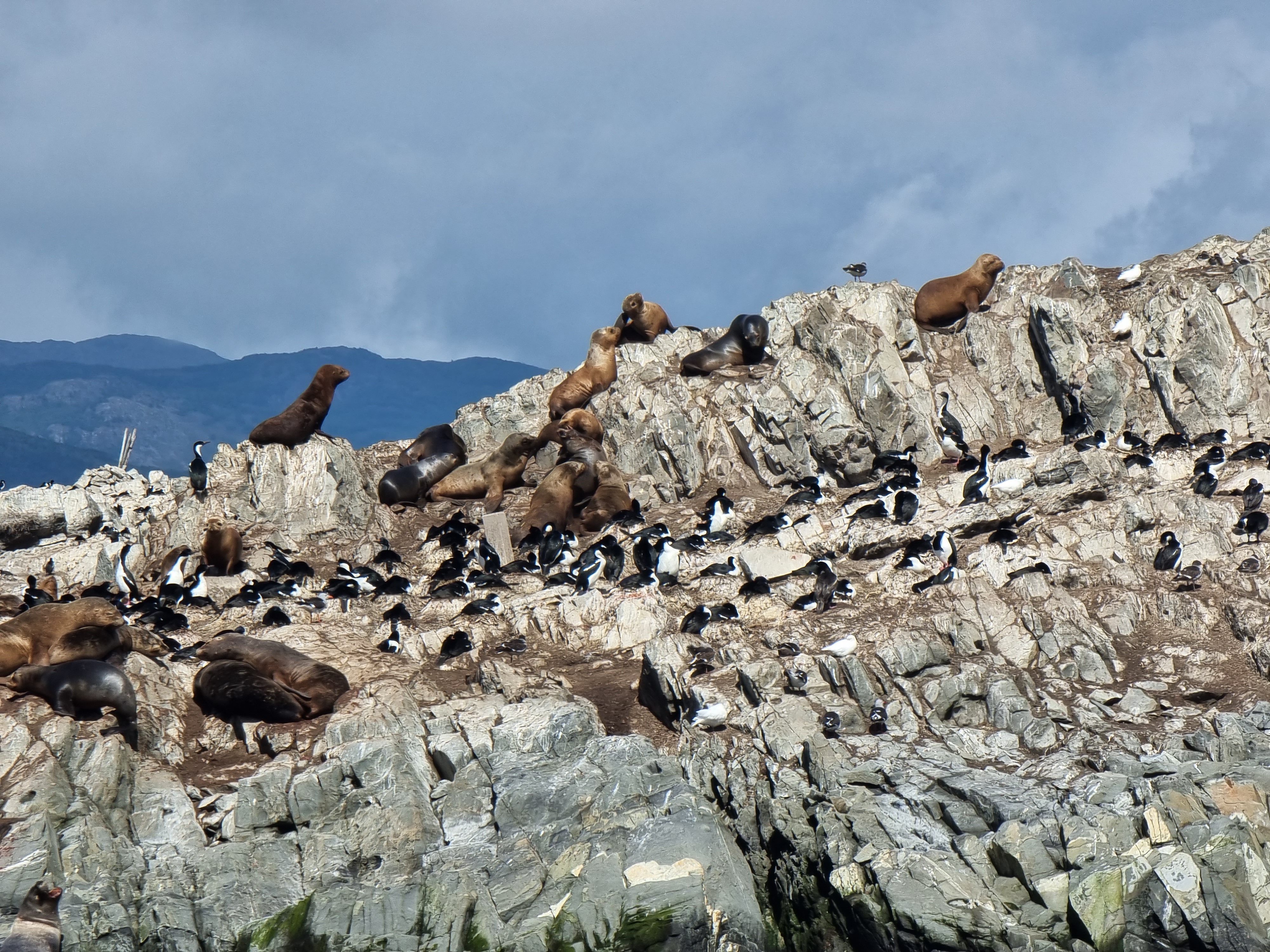
It would even be possible to see real penguins if you take a full-day Beagle Channel cruise. We didn’t do that, though, as we didn’t want to see the animals only from the boat but wanted to walk next to them. For this reason, we booked a tour in the afternoon that takes you to Isla Martillo, where the penguins live.
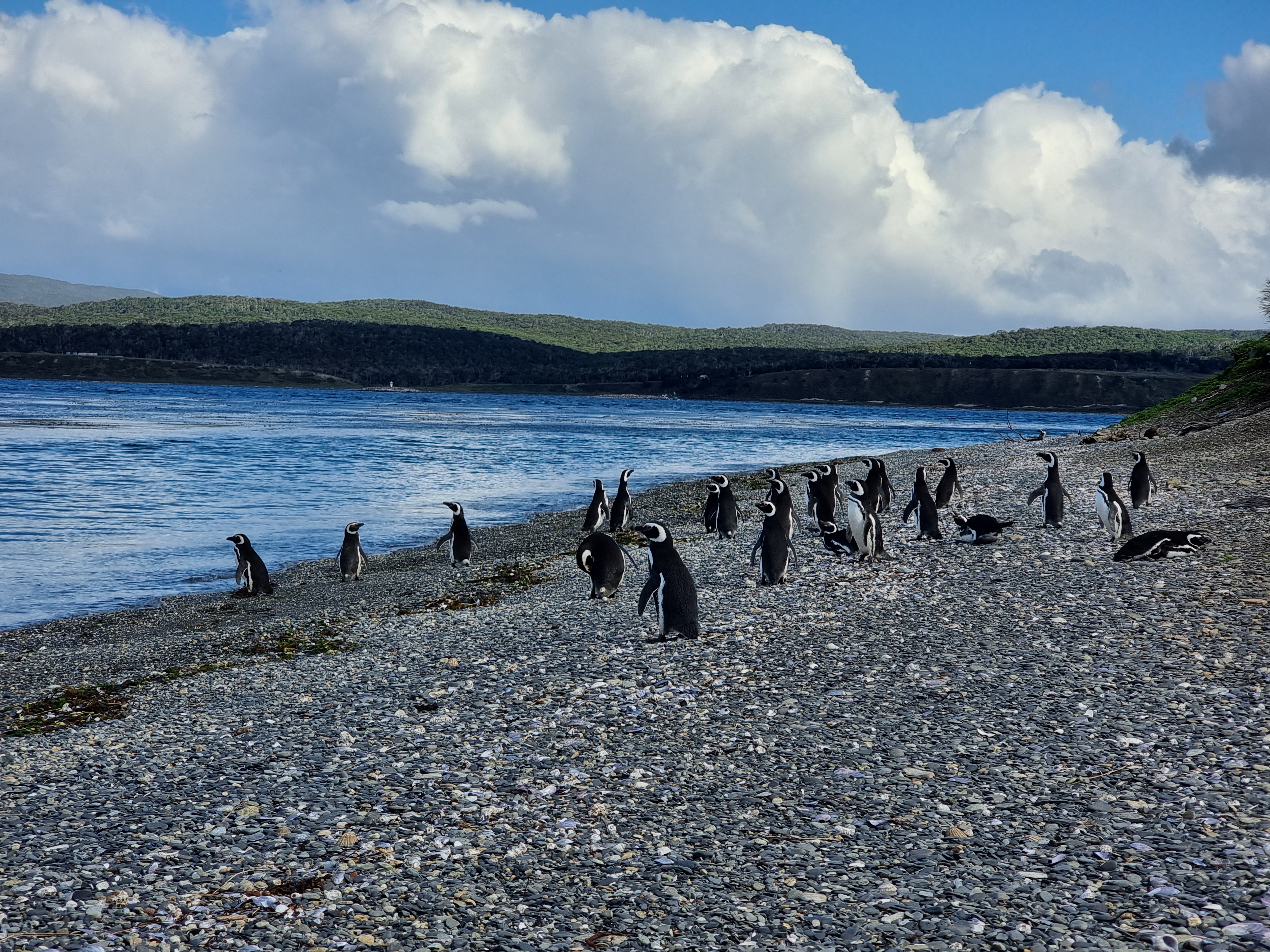
Two species of penguins live on Isla Martillo: the magellanic penguins and the gentoo penguins. If you are lucky, and it was in our case, you can even see king penguins. These magnificent creatures sometimes “stray” to the island and are therefore guests and not permanent residents.
The penguin tour was a worthy end to our stay in Ushuaia. However, due to the temperatures, we were also happy when we could fly back to warm Buenos Aires, where spent the last two nights of our Argentina trip.
How to get around Argentina
Argentina is the eighth largest country in the world. This means that traveling in the country is a bit time consuming. If you were to go by car from Puerto Iguazu in the north to Ushuaia in the south, it would be a 52-hour drive (without breaks). That’s longer than it would take from my hometown Basel to Tehran in Iran….
Fortunately, Argentina has a pretty good flight network that connects the places with the most important sights well. Although the frequency of flights during our trip was about half of what it was before the pandemic, we still got from one place to another without any problems.
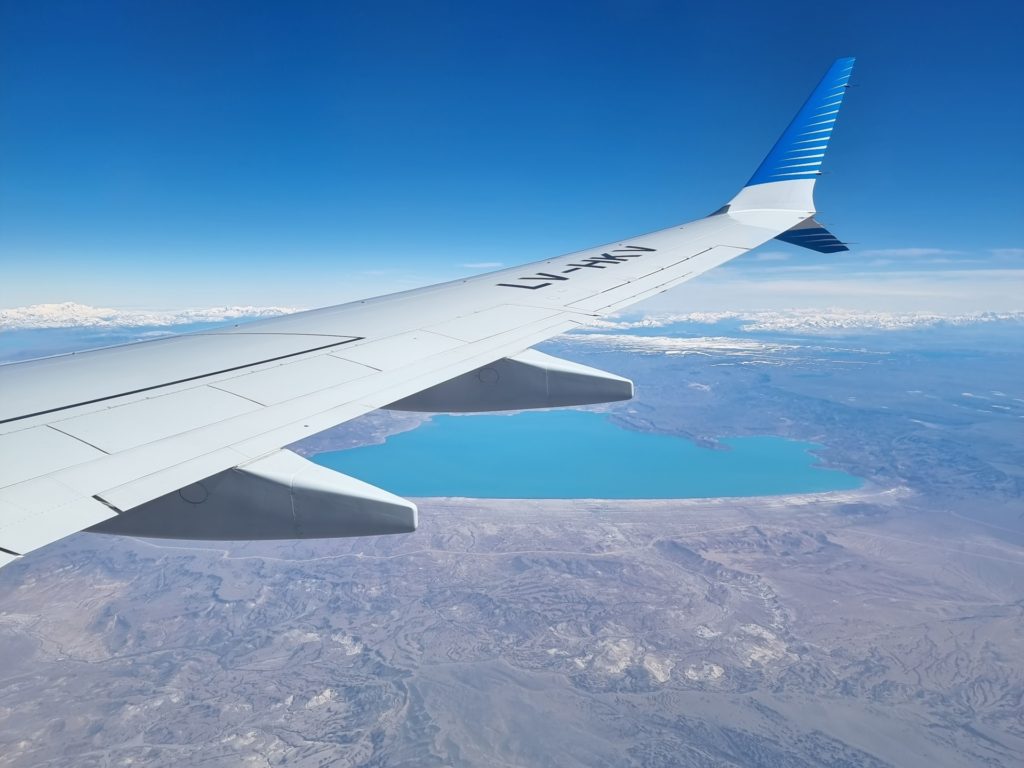
To compensate for the lower number of flights, the airfares were at least very reasonable. We paid just under 600 USD for five domestic flights. The flight from El Calafate to Ushuaia alone cost $250, because there were only Premium Economy seats available. The low prices will probably not last forever, but those who travel to Argentina in the next months might be able to benefit from it.
As an alternative to flights, you can also travel Argentina by car or bus. However, the bus rides can be miserably long and unless you belong to the category of travelers who claim that a 24-hour bus ride “is cool” (believe me, it is not), I would recommend the plane. The plane tickets are not much more expensive anyway.
By the way, the national airline Aerolineas Argentina has two fares: one for the locals and one for tourists. The price difference was about 25% during our trip. In retrospect, I would recommend paying the local’s price (by not changing the language on the website), as long as you travel with carry-on and can check in online. The boarding pass does not say what price was paid and in our case they didn’t notice that we bought tickets with both the local and tourist fare.
So much for the logistical challenges. Let’s move on to the next category. The food.
The best cuisine in Latin America
Argentine cuisine is world famous for its steaks. There is meat everywhere, so vegetarians may not always have an easy time here. The meat quality in Argentina is deservedly counted among the best in the world. Also in abundance are empanadas. Unlike other countries in Latin America, they are baked and not fried in Argentina, which in my opinion tastes 10x better.
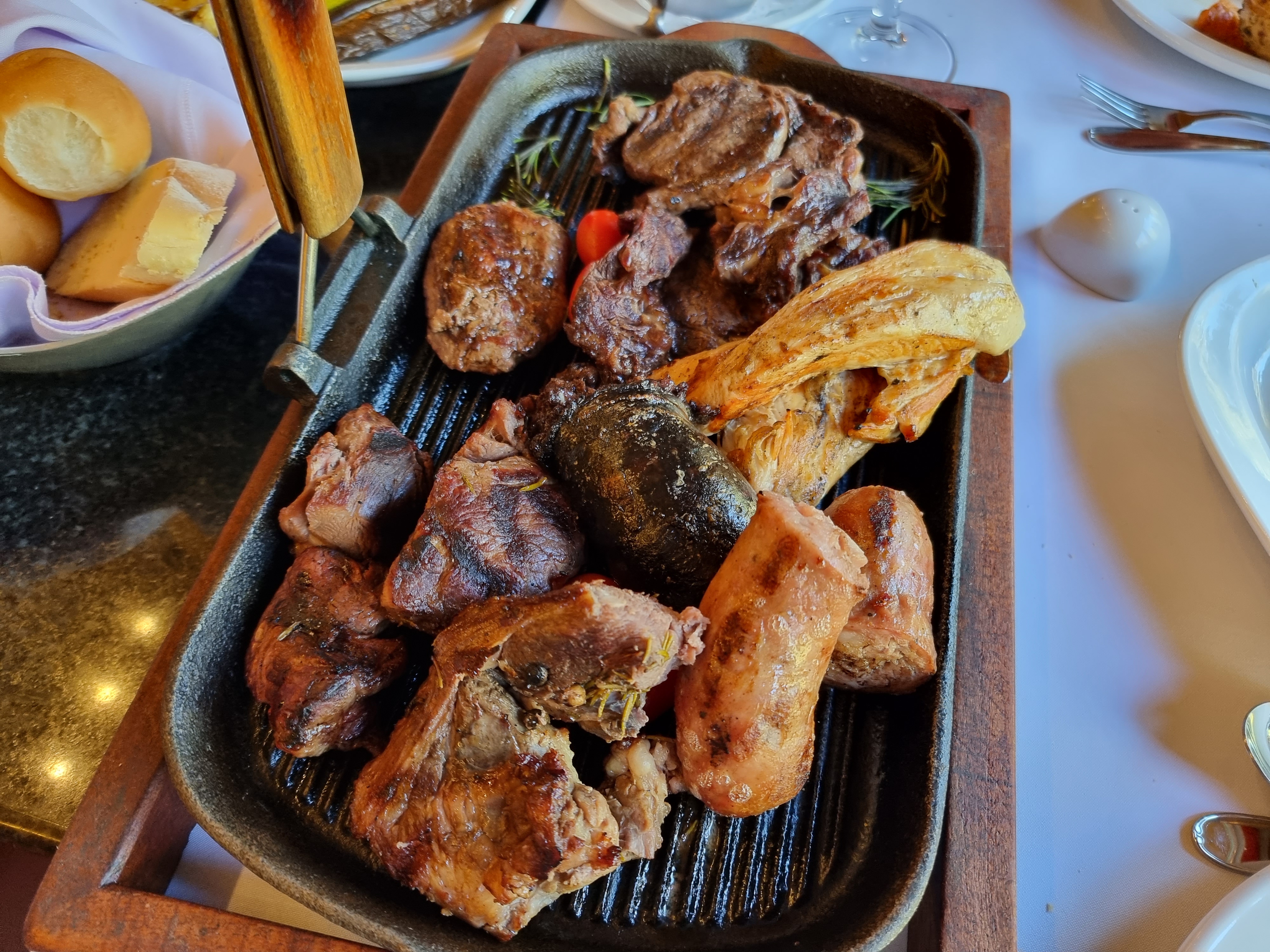
Don’t worry if Argentine cuisine is too meat-heavy for your taste. Buenos Aires is a food paradise, which has restaurants with cuisines from all over the world. So you can have a Taiwanese beef noodle soup or a Persian rice in between. In Patagonia it is not unusual to find food that origins from Central Europe, e.g. goulash with spaetzle. And in Ushuaia, of course, fish and seafood is on every menu.
Oh, and the sweets. Dulce de Leche, the Nutella of Argentina, is a cream made of milk, sugar and vanilla. There are countless desserts with dulce de leche and also pastries in bakeries or cookies filled with it. Absolutely delicious, if you ask me.
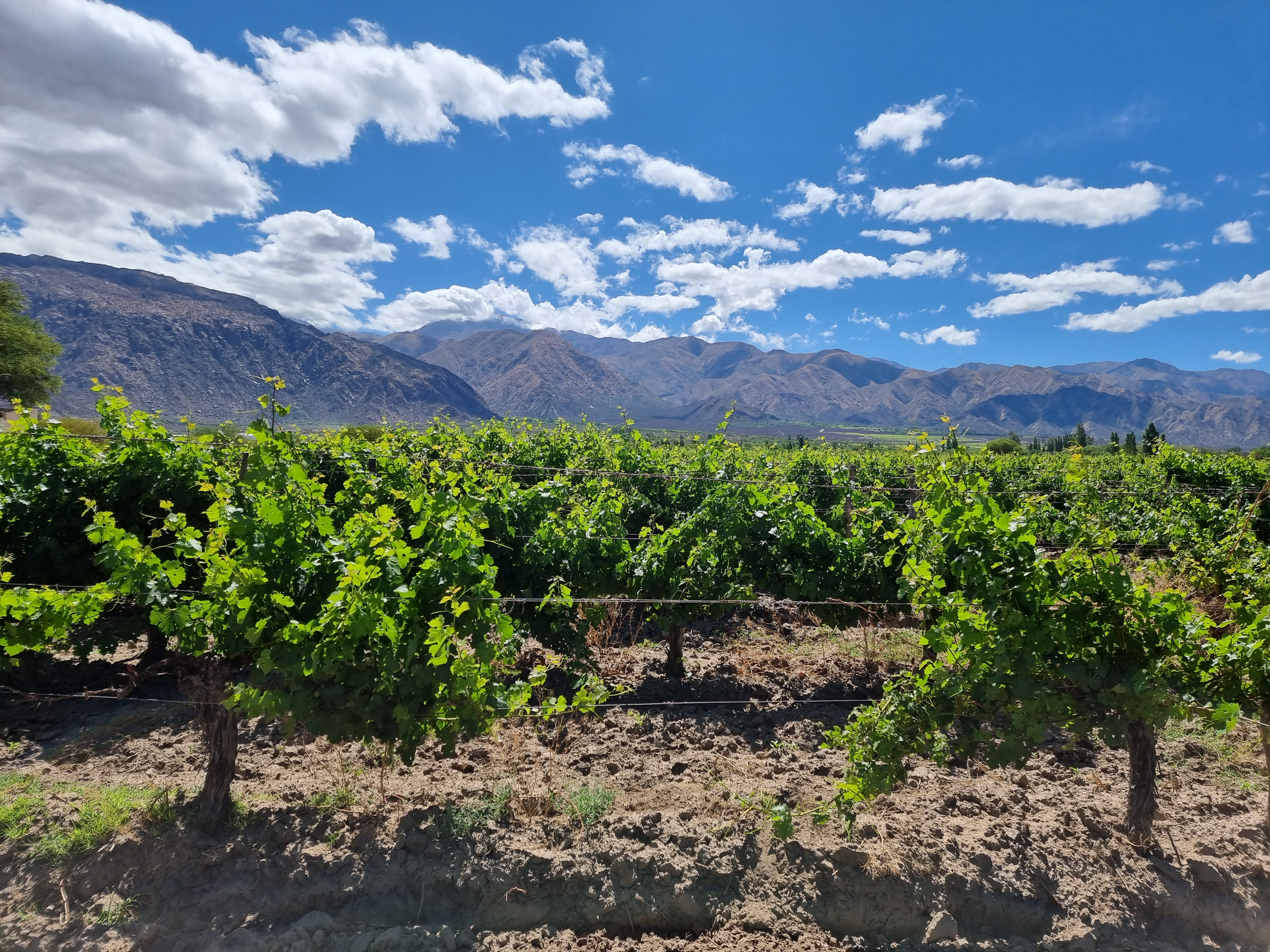
Argentina’s cuisine is for me by far the best in South America, even in all of Latin America. The meat is world class (although you might not want to eat another steak at some point, believe me) and there are so many influences from European cuisines that you always have a big choice of dishes.
Cost and budget
You may now think that all the activities and the food are available for a hefty price. The answer is no. To be more precise, Argentina is one of the cheapest countries I have visited recently. There is a little trick to this and I am shocked that many travelers we met in Argentina had never heard of it…
Let’s start with the basics first. The Argentine Peso has lost a lot of value in the last few years, which makes most things in the country seem cheap anyway. So that you get a certain understanding for it, I’ll break down the costs into accommodation, tourist activities, food and the rest.
Our accommodations consisted in most cases of 4 to 5 star hotels. On average, we paid about $55-70 per night for a double room, which is not much by international standards. For a 3-star hotel you pay about 30-35 dollars per night and hostels will be even cheaper. Of course, it is obvious that Argentina’s struggling hotel industry did not charge the prices they did before the pandemic. So that might change in the foreseeable future. The further south you travel in Argentina, the more expensive the accommodations become by the way.
The tourist activities varied relatively strongly depending on the city. The entrance to the Iguazu Falls cost the equivalent of about 12 dollars per person. For the three day-trips in Salta, we paid a promo price of 8,000 pesos per person, which is about 80 dollars. The day-trip to the Perito Moreno Glacier was comparatively expensive at about 75 dollars per person (including the boat ride) and the half-day penguin tour even cost 130 dollars per person.
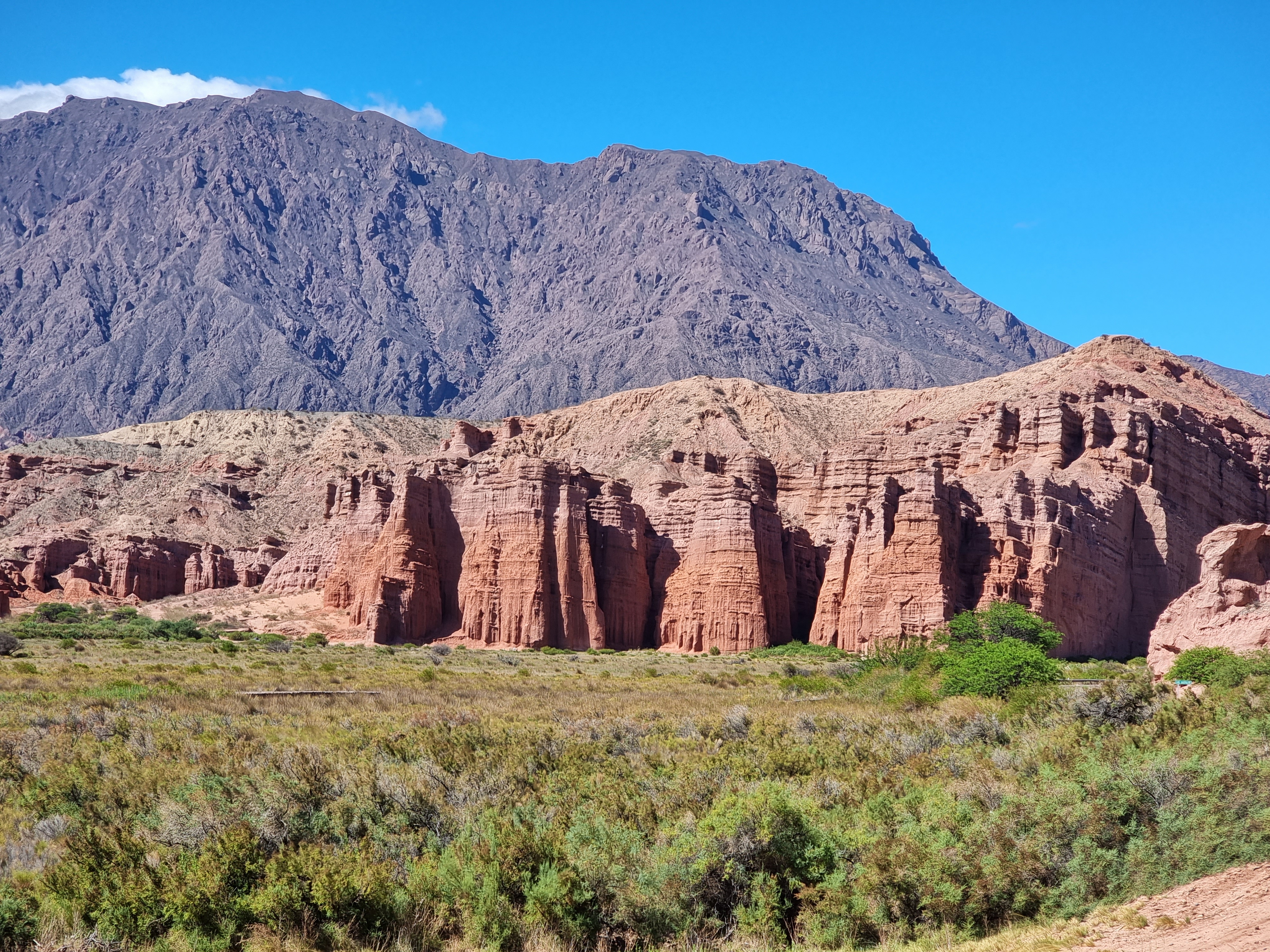
The prices for food also varied greatly depending on the city. In Salta, you can get a main course in a good restaurant for about 500-1,500 pesos, or 5-15 dollars. Vegetarian dishes were of course cheaper than the steaks. In Buenos Aires, however, prices in restaurants doubled. Prices were also higher in the south of the country than in the north.
Other expenses we had were cab rides. We actually almost always ordered cabs via Cabify and Uber (fewer cars in service than Cabify). The prices for a half-hour ride in Buenos Aires were usually around 400-500 pesos. Furthermore, I could list here the SIM card. Depending on the provider, you get the card for free (we had one from Personal), for 2GB of data you then pay 260 pesos.
You’ll agree that this all sounds very affordable, right? And now for the trick: how about cutting the cost in half? The solution is called the blue dollar, the parallel dollar rate on the black market. Argentina has a thriving black market for currencies and there you can get twice as many pesos for your dollars as you can at a bank. You just have to know where to change the money.
The black market prices can change daily. During our trip the bank gave 99 pesos for one dollar. On the black market it was 195-198 pesos for one dollar. To avoid the risk of getting counterfeit money from a money changer in Calle Florida in Buenos Aires, you can change your money in several exchange offices.
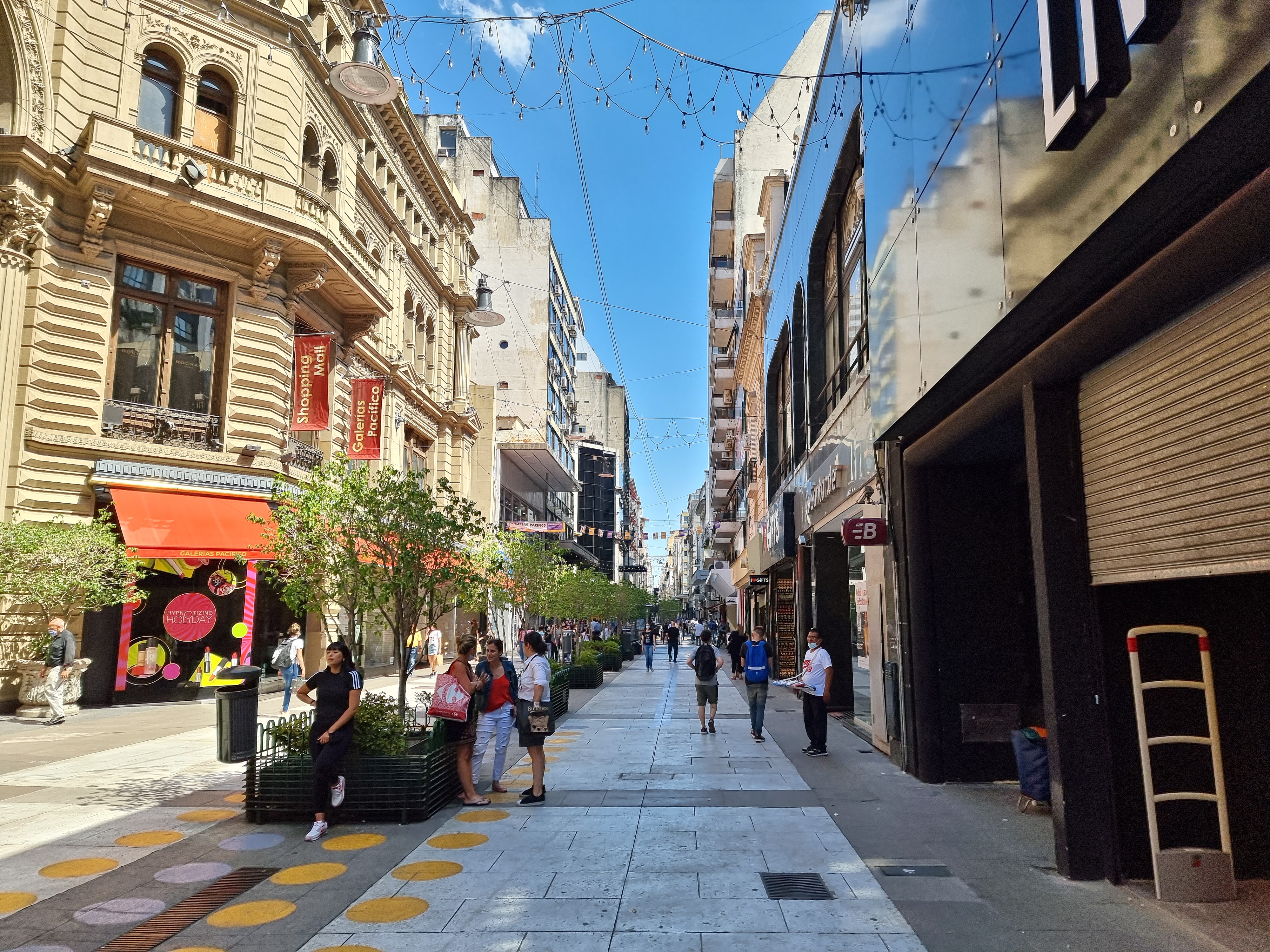
The hotel can certainly recommend one that offers the blue dollar exchange rate. However, some hotels play dumb and pretend that they have never heard of it in the hope that you will pay with US dollars. Here it is important to make it clear to them that you are familiar with the black market.
Since we basically doubled our money with this trick, our expenses read as follows: 4 to 5 star hotel = about $33-42 per night for a double room (note: you pay a VAT of 21% for the hotels if you pay in pesos. But is still much cheaper if you exchanged money on the black market), three day-tours in Salta = $41, which means just under $14 per day (!!), a 400g steak in a restaurant = $7.7, a 20 minute cab ride from Recoleta to Aeroparque airport = $1.8.
Thus, a fairly affordable country becomes a dirt cheap one. The solution is simple: take as many USD as possible with you and change it in Argentina. You should use your credit card as little as possible and avoid ATMs anyway due to additional fees.
Argentina, Latin America’s “most European” country
In the Netflix series “Streetfood: Latin America” a protagonist from Buenos Aires claims that the Argentine tend to compare their country with European countries rather than with other Latin American countries. I can certainly understand why, because Argentina is by far the most European country I’ve seen in Latin America so far.
You can see the European influences in many things. In the architecture, the culture, the music and also in the food. Also in the appearance of the people. To me, the Argentine looked more similar to the Spanish or the Italians than to other Latin Americans. Sadly, the reason for this is that the indigenous people were severely decimated when the Europeans arrived, which also means that there are fewer people who have an indigenous look. With the exception of Argentina’s northwest.
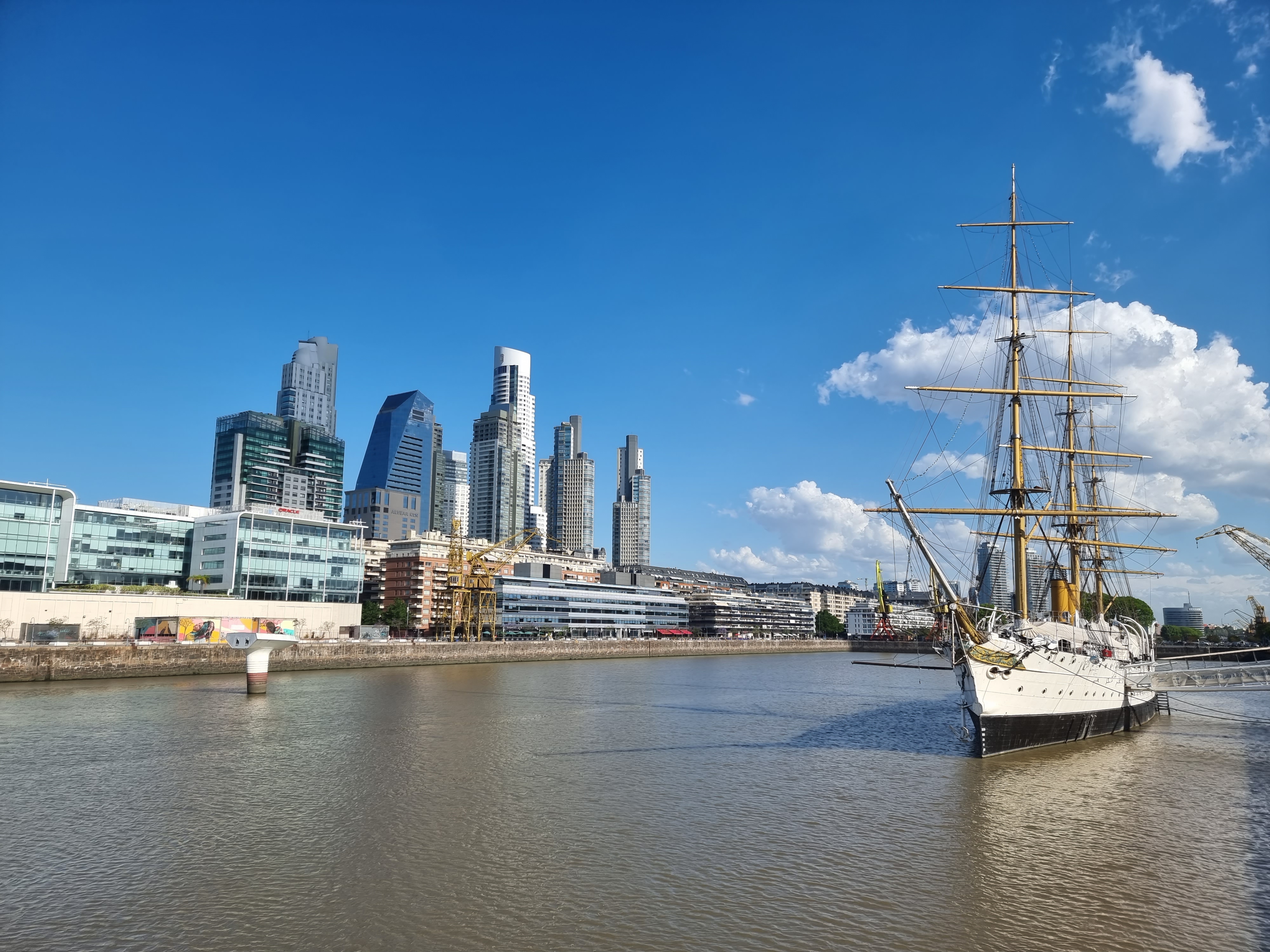
Another characteristic is the language. I have always perceived South America as a continent where it’s easy to get lost if you don’t speak Spanish (or Portuguese). Even though not everyone in Argentina speaks English, the level of English here is much better than in other Latin American countries. Needless to say, basic Spanish skills will definitely make the trip easier.
The fact that Argentine tend to compare themselves to Europe rather than Latin America also occasionally gives them the reputation of being arrogant. My experience with the Argentine, however, was the complete opposite. I found them to be cheerful, nice and helpful people, sometimes melancholic when they rant about their economy, but generally very welcoming to tourists.
Apart from the rather chaotic reopening of the country, with one province not knowing what the other was doing, I found Argentina to be relatively well organized. For travelers, this means that transportation leaves on time and buying tickets – whether online or at a point of sale – is relatively straightforward.
For all these reasons, Argentina is definitely a perfect starter country for those who have never traveled in South America before.
Why Argentina is one of the best countries in the world
As of writing this, I have visited six other countries in South America (Brazil, Peru, Colombia, Ecuador, Paraguay, Uruguay) and four other Latin American countries (Panama, Dominican Republic, El Salvador, Costa Rica). Until now Colombia, Peru and Costa Rica were or are my top3 in this category and after the Argentina trip the question arises where I would rank this country.
When you look at all the places you can visit in Argentina, plus the food, the people and how easy and stress-free it is to travel around the country, I think Argentina is one of the best destinations in the world. Add to that the tremendously low prices thanks to the blue dollar, and Argentina offers some of the best value for money in the world. Maybe even the best.
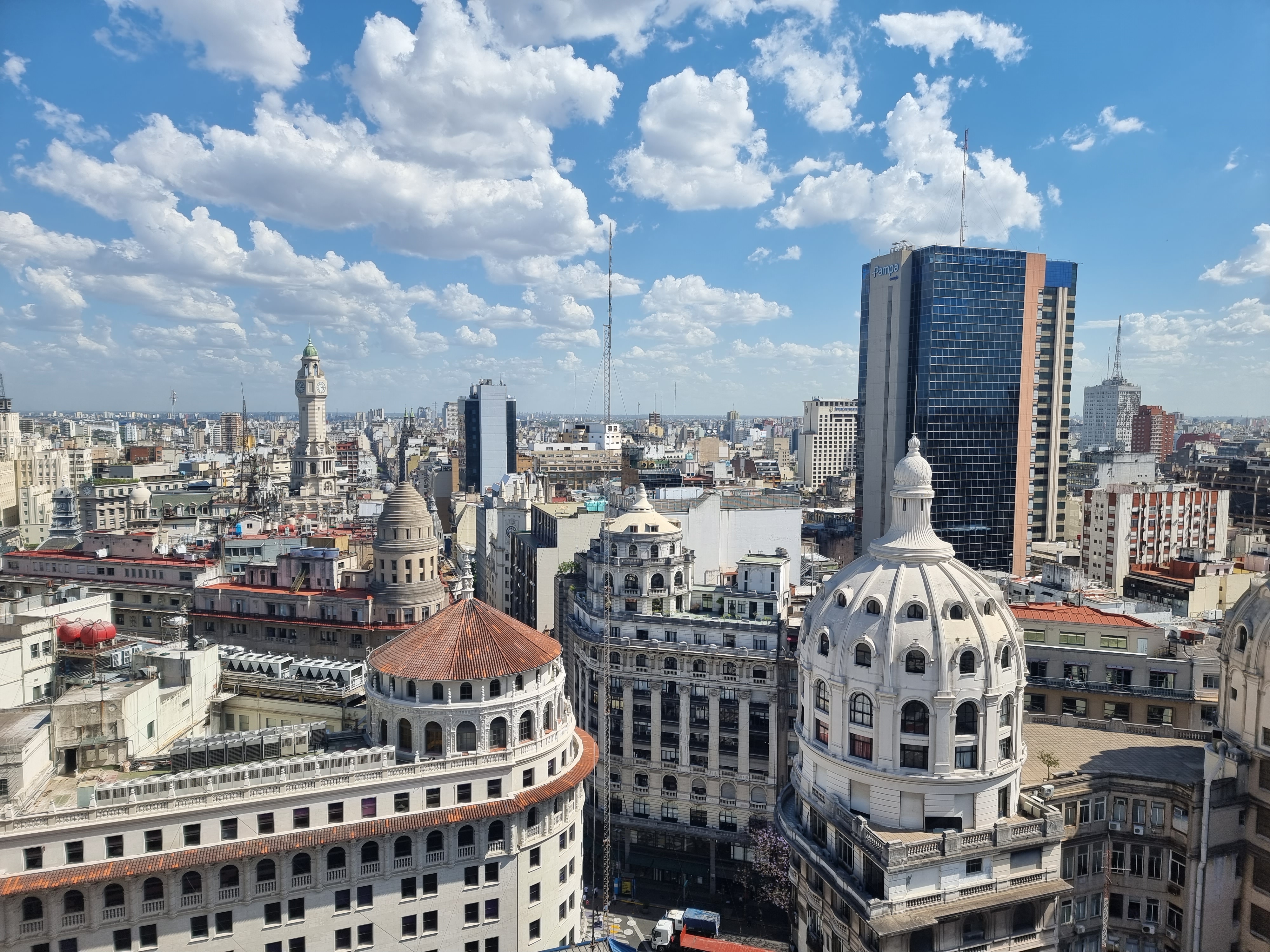
Before this trip to Argentina, Colombia was my number one country on the continent. This place now goes to Argentina. For now at least. While I spent 18 days in Argentina, it was only 10 in Colombia. With a second trip and additional places visited, Colombia might pass again. Or not. It doesn’t really matter anyway, because both countries are great.
Of all the places we saw in Argentina, I couldn’t even say which was the highlight. All places were great. With the Iguazu Falls in their tropical environment, the dry and barren landscapes of Salta and Jujuy, the metropolis Buenos Aires, the alpine landscapes of Patagonia and the windy and wild end of the world in Ushuaia, we have experienced a trip that would not have been possible more diverse.
The good thing is that there are still enough exciting places in Argentina which I couldn’t visit on this first trip. For example Mendoza, Córdoba, Bariloche plus one or the other national park. And then there is Buenos Aires, a city that will inspire me a second time. So Argentina is guaranteed to be a country that will see me again someday.
